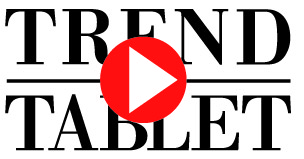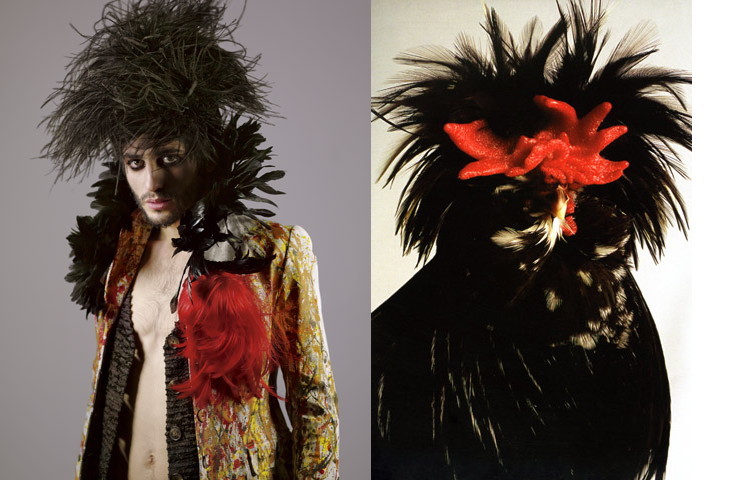BIRDS
ugly lovely
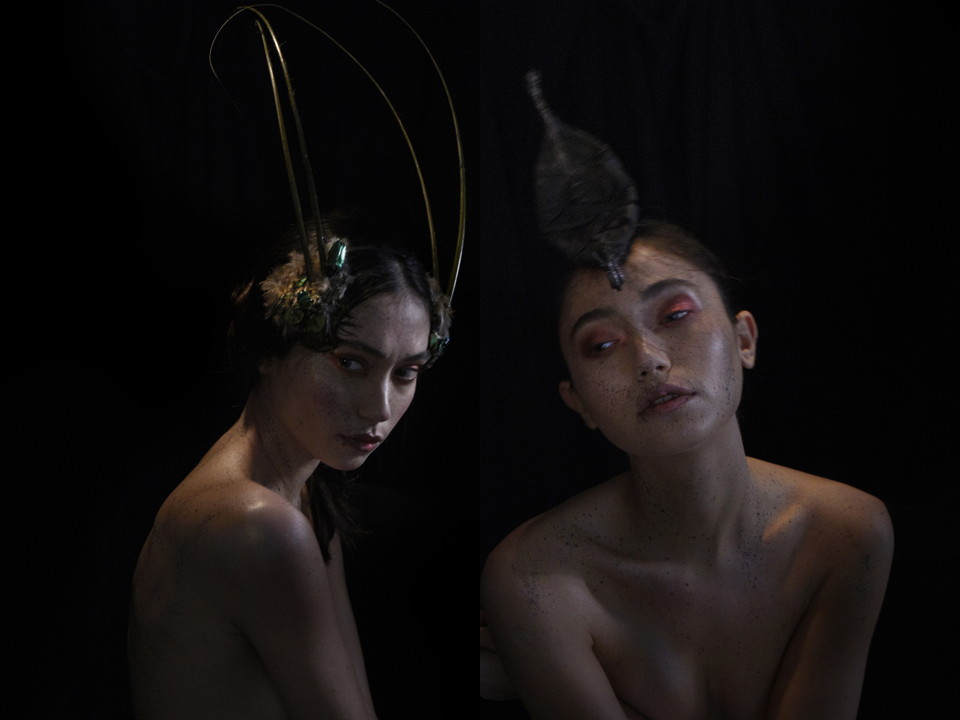
Transmutation was the word that came to mind the first time I saw milliner Sahar Freemantle's Magpie inspired Ugly Lovely collection. A narrative of claws, animal horns, feathers, shredded snake skin, fossilized beetles, dried butterflies, bird skulls, etc, gave me the impression that if I wore one of her ingenious creations, I could morph into this intelligent bird. The Magpie is the only non-mammal species to have the ability of self recognition in a mirror test. And they are are also the ultimate recycler known for thieving and collecting found objects for their nests.
Raised on a farm it was commonplace for Sahar to see animal carcasses, skulls, rotting fruit and vegetables and it is in this milieu of birth, death and decay that she discovered beauty in the extraordinary. While studying at Edinburgh College of Art she found passion in high drama, Schiaparelli hats, insect art and taxidermy receiving her degree in Costume Design and specialising in Millinery.
Ugly Lovely is a description to define something that might repel at first but then become beautiful. Her headpieces from this collection are an ode to unconventional beauty. They aim to challenge the notion of beauty by drawing ones own and contrasting it with the dark and the strange. As well they tell a story of fearlessness allowing whoever wears these objects of art to be transformed; bringing out inner confidence and strength.
Gisela Torres
Photos: Gisela Torres
Hats: Sahar Freemantle
Makeup Artist: Sara Sorrenti
Hair: Jack Merrick Thirlway
Model: Danielle Ifra
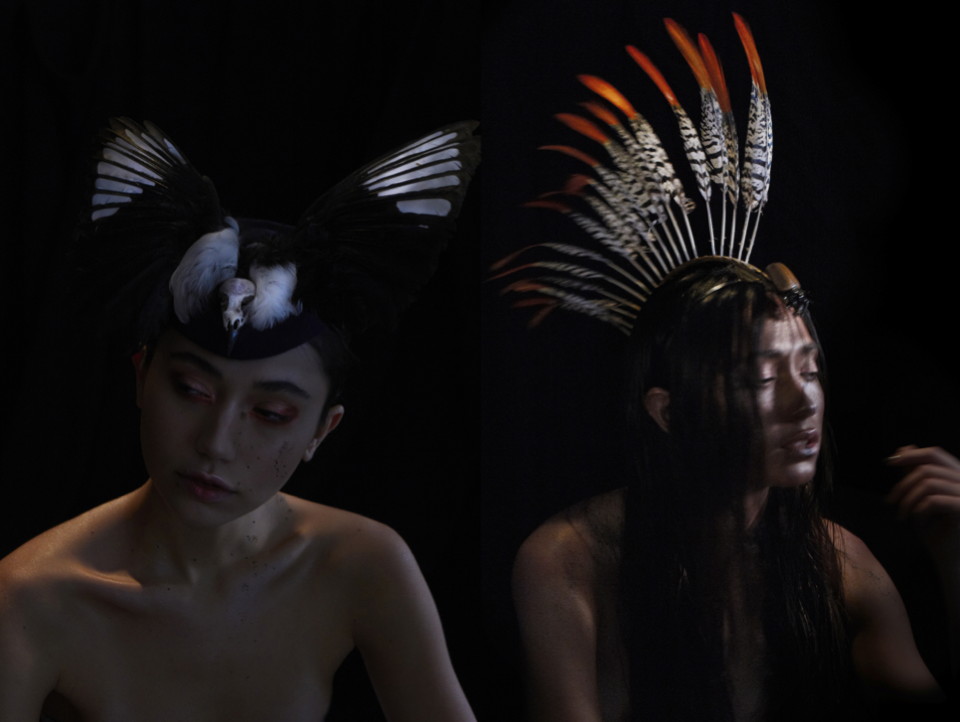
the death of a nightingale
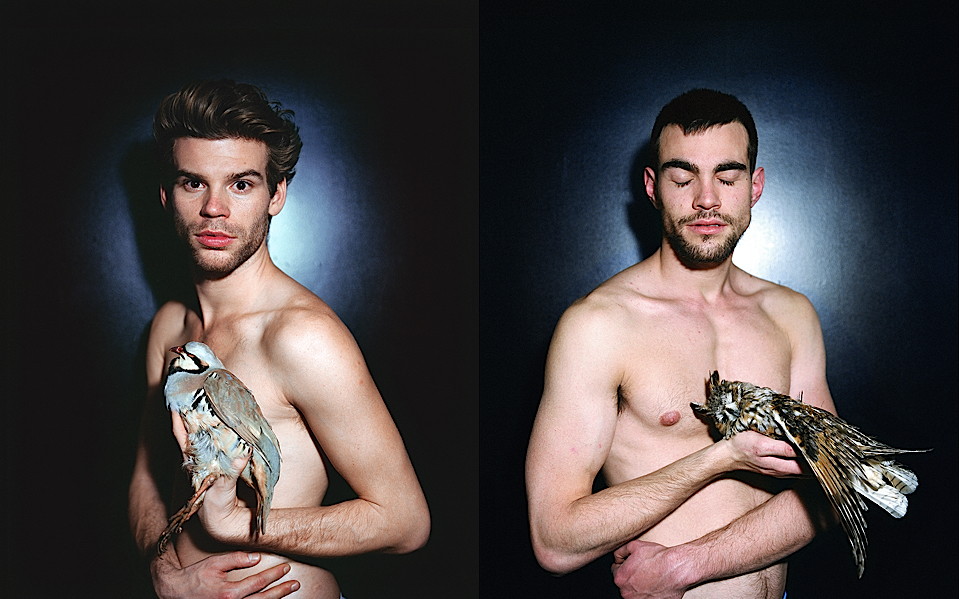
Alectoris, 2013 - Asio otus, 2013
Yuval Atzili was my student. There is a limit to what you can know about your students. There has to be. Even when they are ex-students and ex-teachers.. I have known him as a teacher knows a beloved student. I have taught him 2 years in Bezalel Academy of Arts and Design.
I could see him, and suspected not anyone could.
I have met again a few months ago, we sat in a coffee shop, he doesn’t like coffee shops. He spoke about dead birds, I remembered birds interested him back then as well, in Bezalel. His freezer is filled with dead birds, he said. See, those are birds that people don’t usually put inside their freezer, long winged, magnificent, fragile. Barn owls, flamingo, who could believe it? Pigeons. Even people who eat everything don’t freeze that kind of birds. He told me about the freezer, the cooler where a dead bird is each time carried into the club he photographs in, waiting for the right, crucial moment.
I was immediately sorry I hadn’t thought of it myself, that I hadn’t stolen him from life, into my story. A young man with burning eyes (that’s the way it is, sometimes similes flares in your head, later it softens). Anyway, a young man with brown eyes, keeping dead birds in his freezer and later taking them out of their coverage in a club named Nightingale Cinema, no less. Symbolism pushed its way in, photographs with dead birds, magnificent, hurt, in a club named after the primordial singing bird; and that’s the mode of action: he approaches stranger men at the club and asks them to photograph with a dead bird.
It has to be a story. The necrophilic layer, the emotions layer, the surprise, the threat, the spectacular sight of a boy holding a bird, struck with a spotlight. It’s a story’s geology, something needs to be done, I thought in despair. Yuval would probably say “Israeli goth” and he would be right and I would be wrong, for they are all migrating birds passing through Israel, dying here with all their glory. He doesn’t kill them, it’s important to say, Yuval is the most non creepy person I’ve met and still, I was amazed by the way he creates beauty from this death, present it, displaying it beside the bodies of young men who carry them as carrying their own death.
Creates some kind of life and death erotica, horrible and beautiful. Erotica of exploitation, defiance and embarrassment, and sadness. An almost Christian image, I thought, almost poetic, Jesus in the hands of Mariah. Mariah holding baby Jesus and already visioning his future death, alongside the bird as some kind of prosthesis accessory, exposing the unsaid – here, someone died in the hands of a very living someone. Someone could not woke someone up from its fainting, from its death; that’s almost indecent and yet I believe him; I believe this quest for beauty in all places that supposed to be covered with dirt.
“This is me and my brother”, he said to me simply when describing the relationship between the young man and the bird; two non-identical twins who rolled out to the farthest edges: man and bird, live and dead; and suddenly the layers I’ve counted faded into dust. That sentence he said, reminded me of Jacob Biton’s poetry who wrote about himself and his brother Dogan facing their grandma’s death, the big mother. In his meticulous photograph there is something primary, physical like a bone cracking out of skin. At the tip of every photograph lies the materiality, the labor, the dead bird, the masculine body, the boyish body; And similarly there are the two brothers, the twins, one brother holding the other, a hug or a first grasping in front of the world; And when he spoke, I suddenly thought of a child, who must recreate a scene over and over again; The methods improves but the tongue is repeating the old saying “this is me and my brother”, pointing the truth, does things with words; or in Biton’s words “Dogan won life itself. All the moments. /He is my brother/ don’t come any closer. »
Yaara Shehori
The photographs & text were originally published in "The Hottest Place In Hell" magazine, May 7th, 2015
Bubulcus ibis, 2013 - Ciconia, 2014
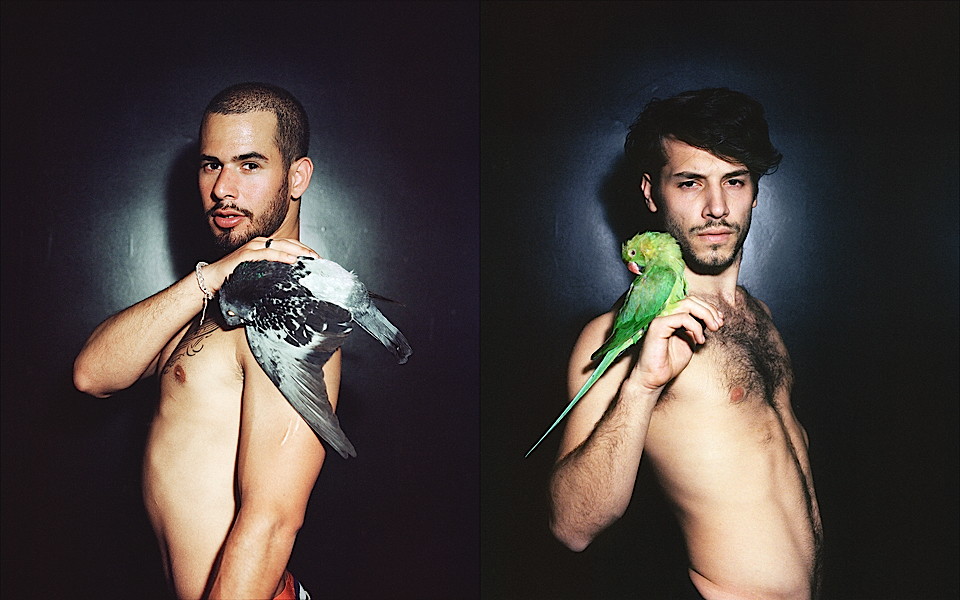
Columba livia, 2014 - Psittacula krameri, 2014
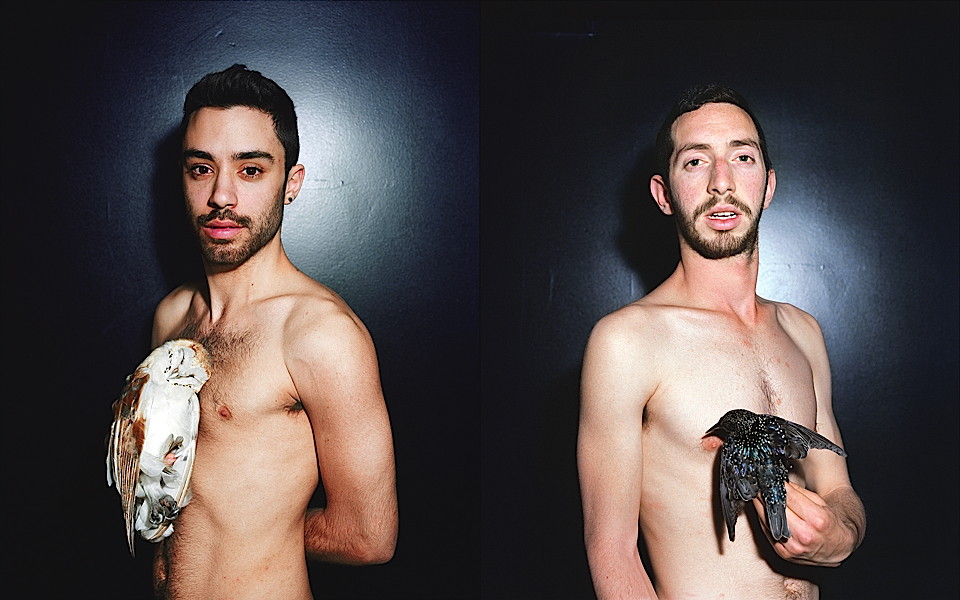
Tyto alba, 2014 - Sturnus vulgaris, 2014
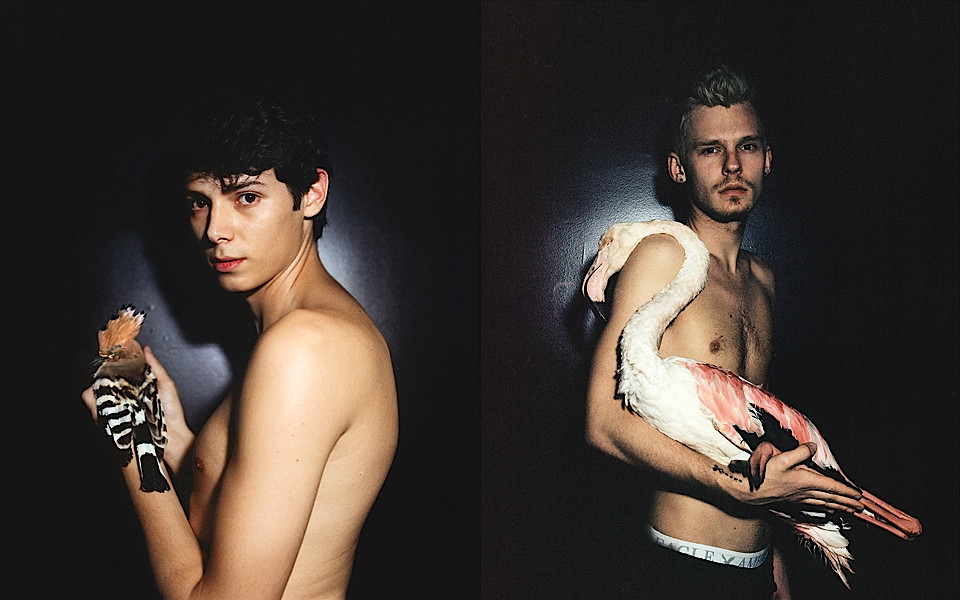
Upupa, 2013 - Phoenicopteriformes, 2014
susan hipgrave
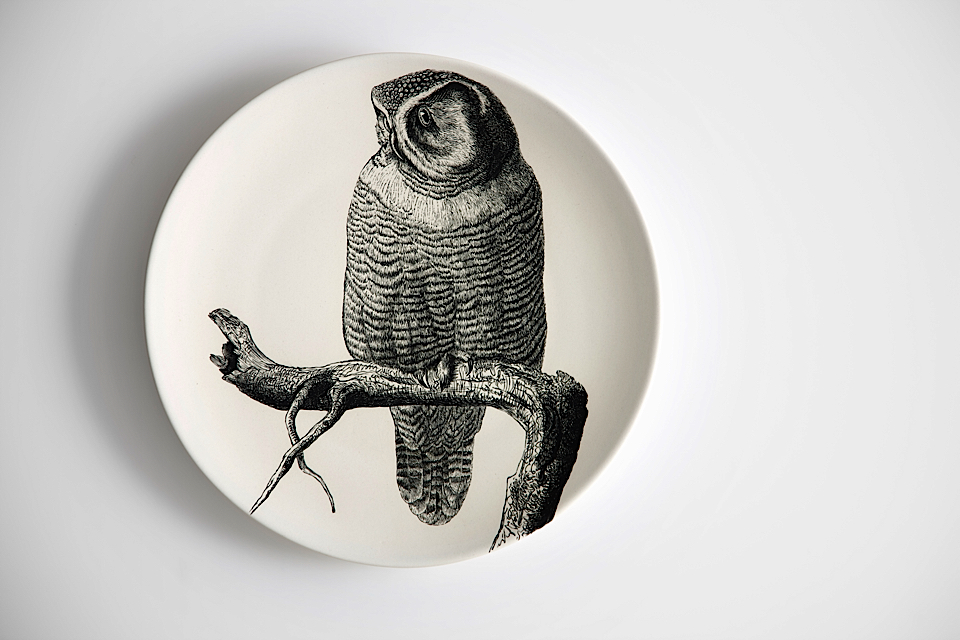
surnia ulula - northern hawk owl
Victorian ornithologists and botanists would have heartily commended Susan Hipgrave’s remarkable series of hand-painted plates. The meticulous execution (each extra-fine brushstroke adding an important detail), the resulting life-like renditions and the consistent format (monochromatic black on white; identical one-size ceramic plates) adhere to the ethos of scientific study. Susan’s ability to focus is well matched by her possession of a steady hand. However, it soon becomes clear that all is not quite as it seems. Susan departs from a straightforward replication of flora and fauna by concocting strange hybrids or by exaggerating features, such as piercing eyes to convey the extreme visual acuity of an eagle. For spectators, an interactive experience awaits: birds, caught in the moment, watch us, ready to strike or to fly away; clusters of twisted vines and treacherous spikes draw us inside. ‘As my work with natural subjects becomes more detailed, so my subjects become more assertive,’ the artist states. ‘When I’m contemplating a new piece, I start by going through my collection of natural history books until I find something that “speaks” to me. I work with it in terms of size and placement, and then begins the slow and meditative practice of putting paint to porcelain. I obsess about how fine a line I can do; ultimately, I love seeing all the little black lines that I’ve painted come together to create an image.’
Despite the striking maturity of her work, Susan has been working in ceramic art for less than a decade. For many years she worked as an art director/designer in advertising. Then, in 2005, ‘sick with shingles, I walked into a shop that was running ceramic painting classes and it was immediately obvious that it was something I had to do’. While she has worked with earthenware as well as porcelain, her medium has always been the plate. ‘My art is contained, so I can pack it up and travel easily,’ Susan notes. ‘We have a house on the south coast, so I spend much of my time there, painting in daylight.’ Her creations work well both on a small scale (a single plate) and a large scale (her first exhibition – a spectacular window display at the Grantpirrie gallery in Sydney – showcased several plates strikingly placed against a dark backdrop). If there were an issue with Susan’s hand-painted works, it would be that once you have admired one, you compulsively want to collect them all.
Text by Olivier Dupon, author of 'Encore! The New Artisans' (Thames & Hudson, 2015)
We also asked Susan to tell more about herself with a few questions:
The main characteristic of your personality?
Always curious
What is your favorite occupation ?
Painting... and loosing myself completely in the line
What's your idea of happiness ?
The Saturday papers and a cup of tea with my husband
Do you have a favorite color ?
Teal green
What is your favorite bird?
Magpie
Where would you like to live?
By the sea
Your favorite dish?
Wood-fire oven roasted cauliflower with almond sauce
What is your current mood?
Excited
Any new project to share?
We're re-building our 'nest' after 20 years... it's astounding!
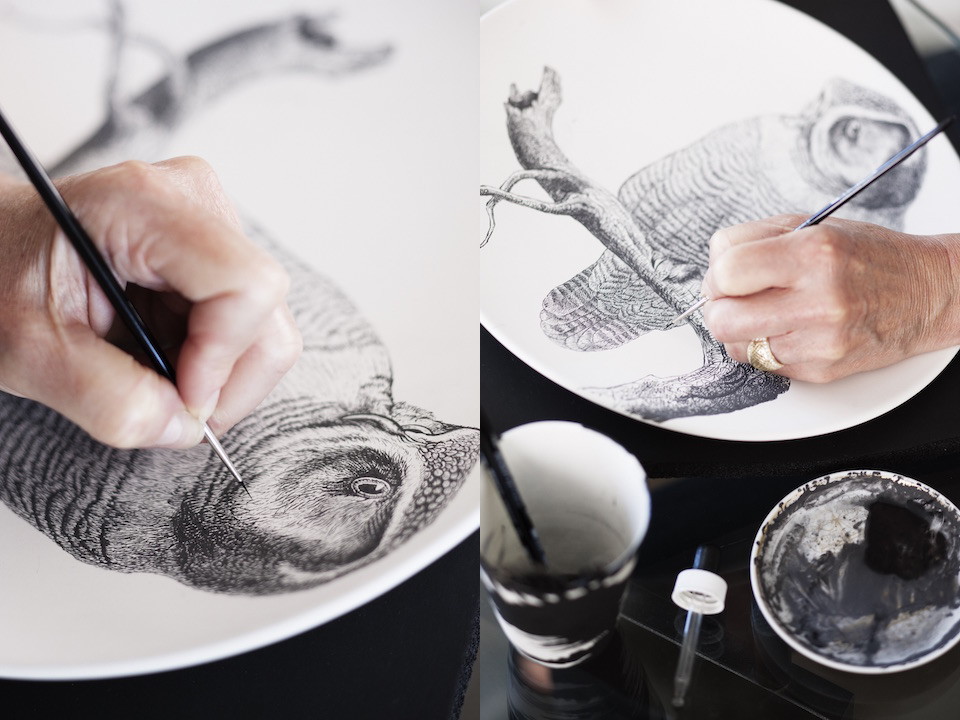
photos by Craig Wall
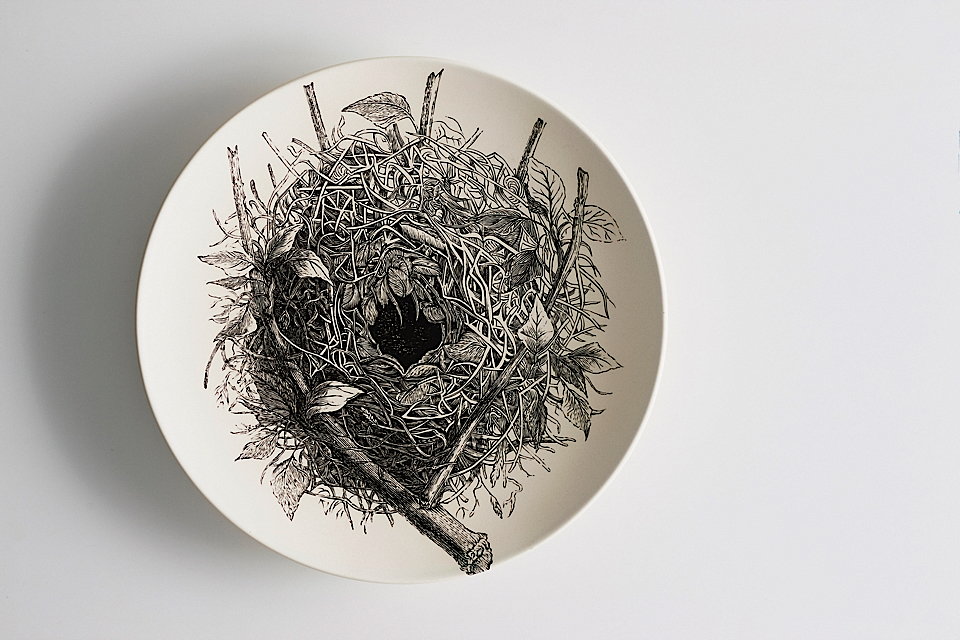
nest of the house sparrow 2013
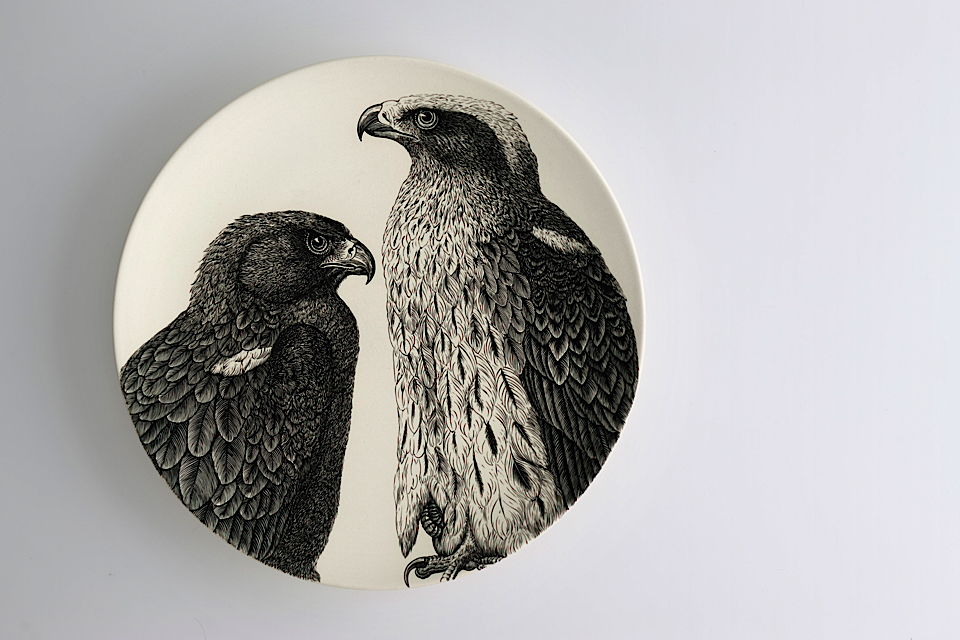
aquila pennata_booted eagle 2012
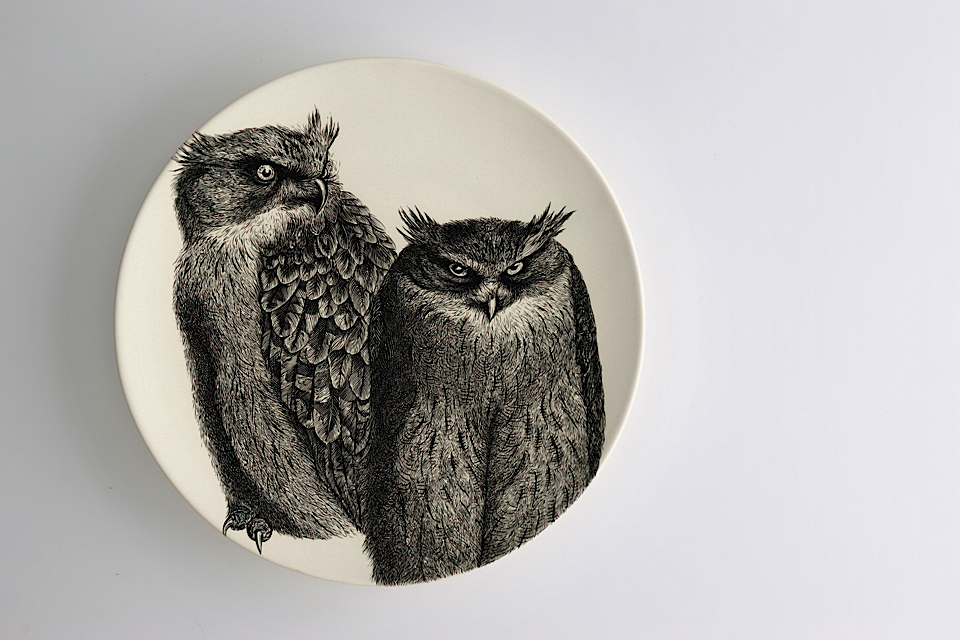
bubo zeylonensis_brown fish owl 2012
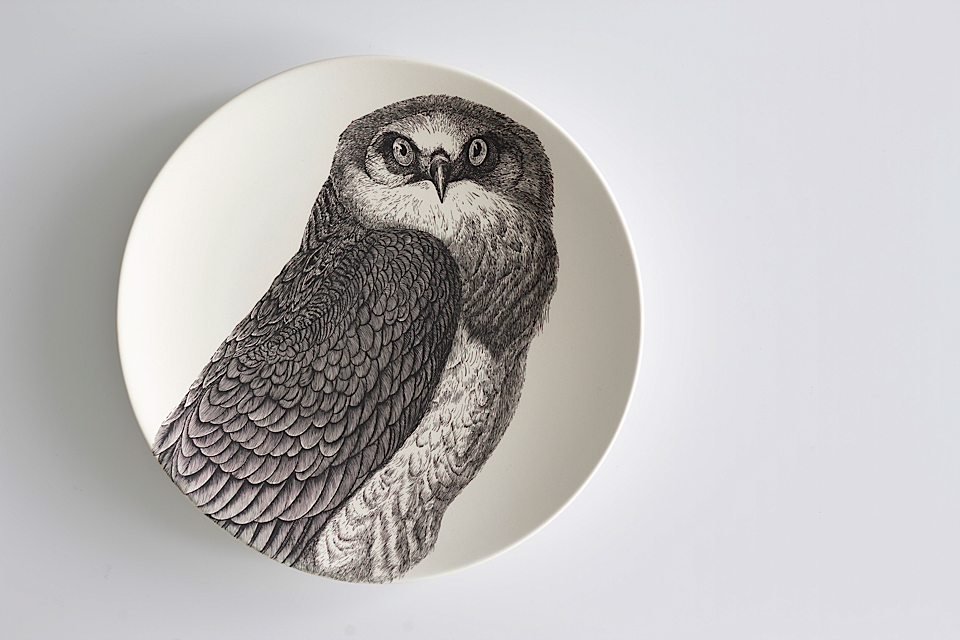
circaetus gallicus:short toed snake eagle 2011
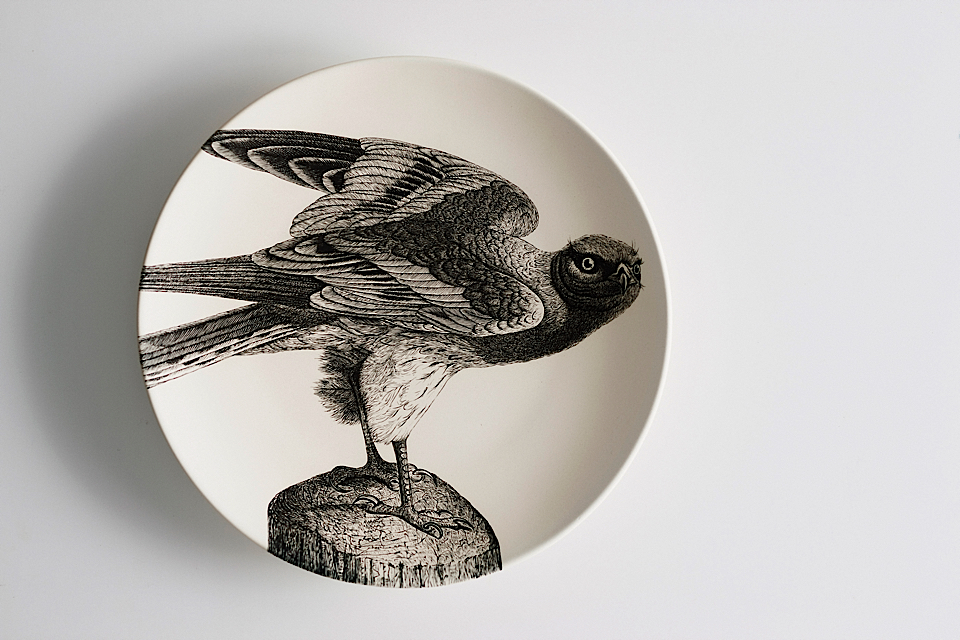
circus cyaneus hen harrier 2013
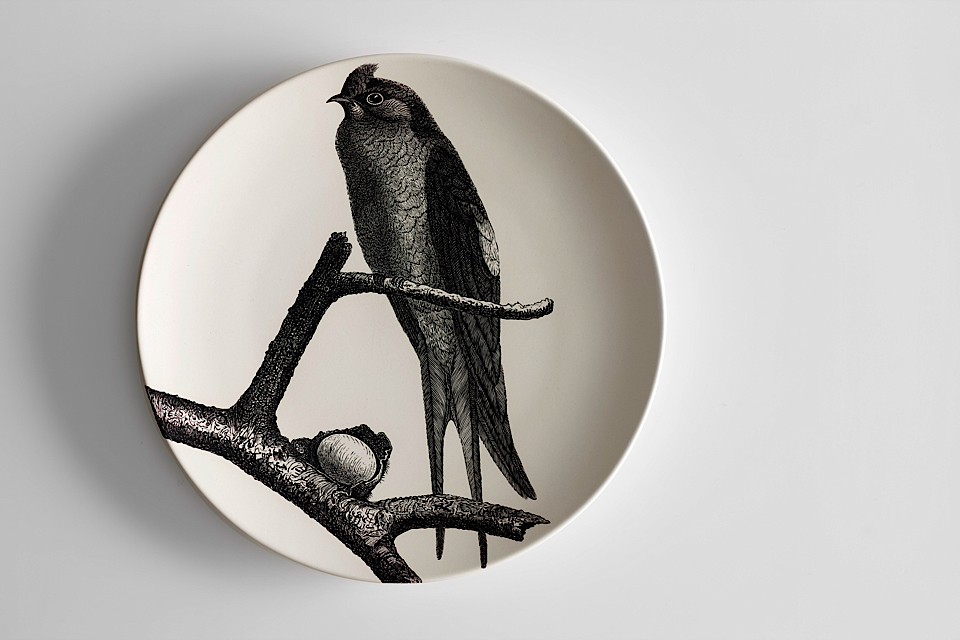
hemiprocne coronata crested swift 2013
feathers and silhouettes
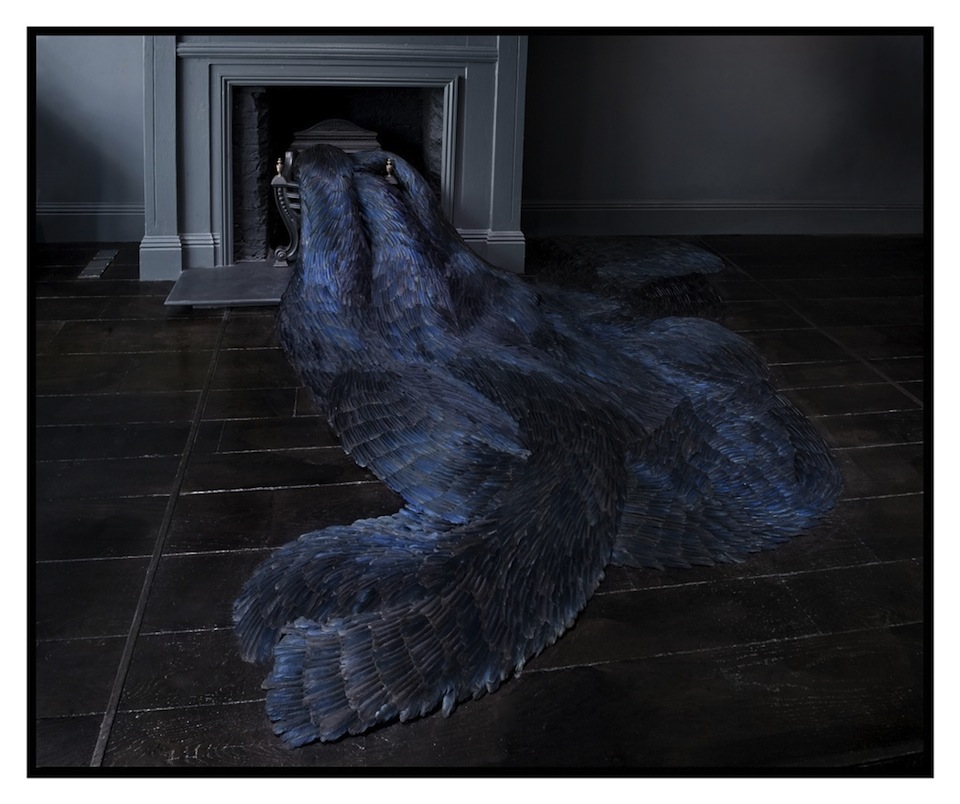
Kate MccGwire - Courtesy All Visual Art, photography Tessa Angus
Having worked with human hair in the past and now with donated pigeon, natural, undyed feathers, Kate MccGwire creates visually striking art. The Royal College of Art MA graduate is based on a boat floating on the Thames, which helps her stay connected to nature.
"I try to create works that are bodily, which have some sort of visceral, immediate feeling about them. Take the pieces in the cabinet, for instance, they are trapped, they have no head and no end, they are uncomfortable and beautiful at the same time. I'm constantly trying to create this fine this fine line between attractive and vaguely disquieting, they are bodily, so we recognise creases and crevices yet also alien and strange. The work uses natural patterns to suggest familiarity and truth yet they are impossible creatures; it's more like a suffocation or tightness, a manifestation of a feeling or an emotion as opposed to an actual thing.
The intent to produce something that can be read on many levels, both visceral and cerebral at the same time, a mobius strip bth in form and meaning", says MccGwire on interview with Coats & Scarry.
Her work transcends art and merges with fashion and photography. She has inspired Helmut Lang's Resort 2013 with her patterns and natural tones and has been featured in a fashion shoot for Garage magazine issue 3 A/W 2012.
"There's a great synergy between my work and fashion design: I think the sensual textures and contours of my pieces compliment the human form".
Lydia Caldana
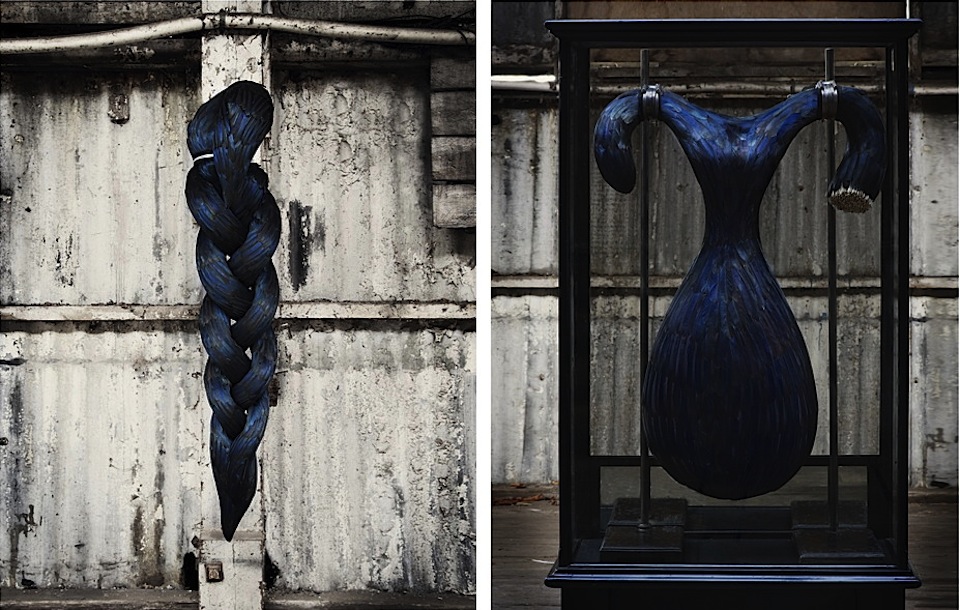
Kate MccGwire - Courtesy All Visual Art, photography Tessa Angus
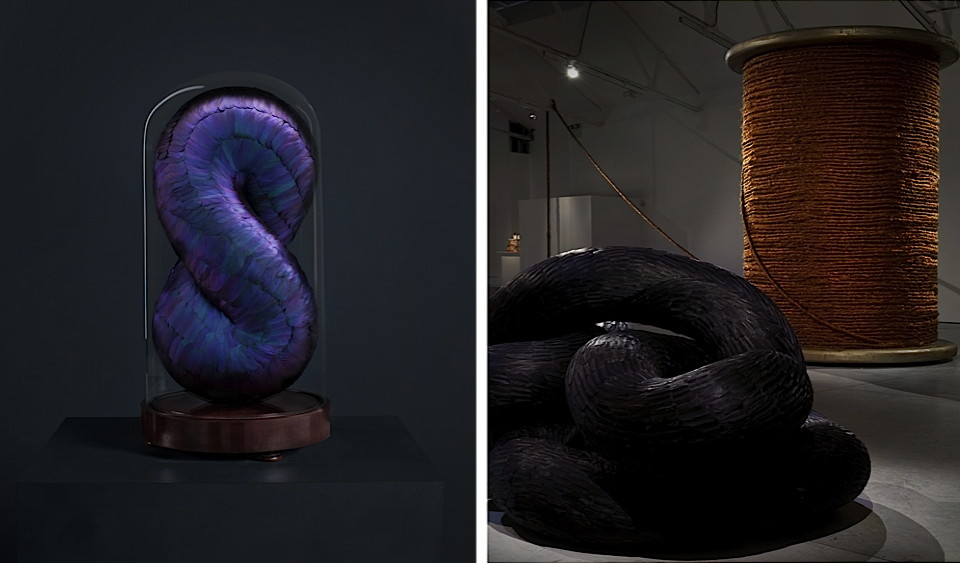
Kate MccGwire - Courtesy All Visual Art, photography Tessa Angus
sun ravens
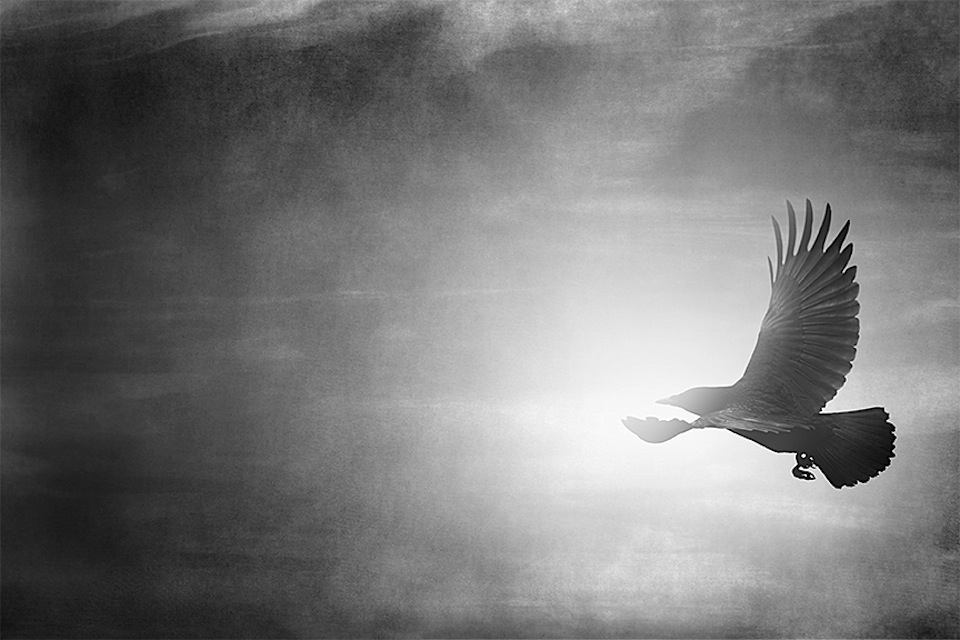
'Raven Steals the Sun' is a new collaboration between photographer Jeff Elstone, scarf designer Taiana Giefer and artist-milliner Selina Elkuch, based on the native Haida myth of how the Sun came to be.
In this story, the Raven, who was first white in colour, came upon the home of an old man who lived with his beautiful daughter. The Raven fell in love with her and soon learned that her father possessed a great treasure contained in a tiny box within many boxes - all of the light in the universe.
Through trickery and transformation, the Raven stole the precious treasure and escaped, scorching himself and thereby became black in colour. He then hung the Sun in the sky and thus released light into the world.
Photography: Jeff P. Elstone II
Model: Michelle @ Muse
Scarves/Wraps: Taiana Design
Headpieces: Selina Elkuch
Make-up: Cheyenne Timperio
Hair: Takeo Suzuki
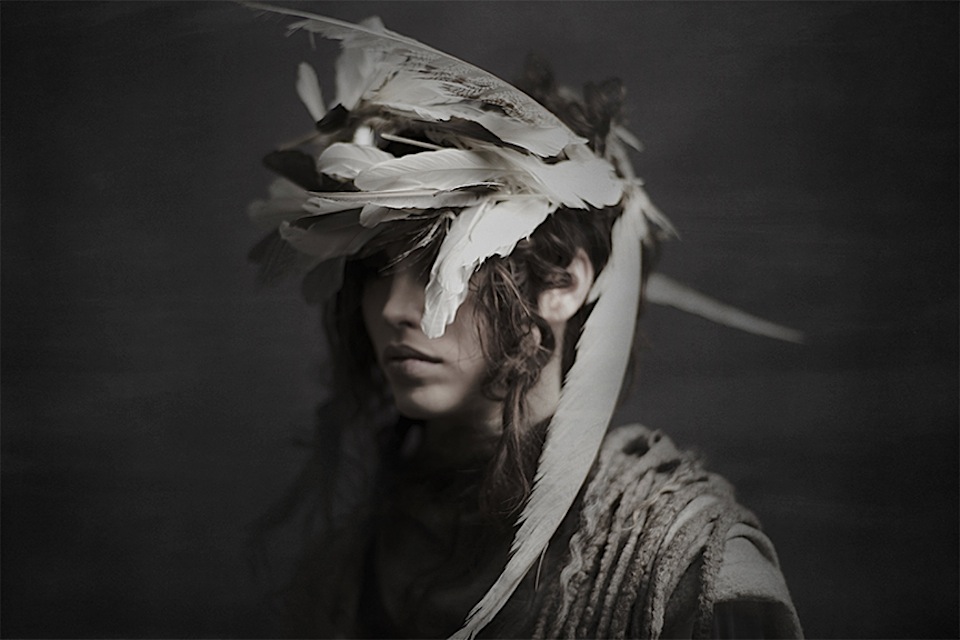
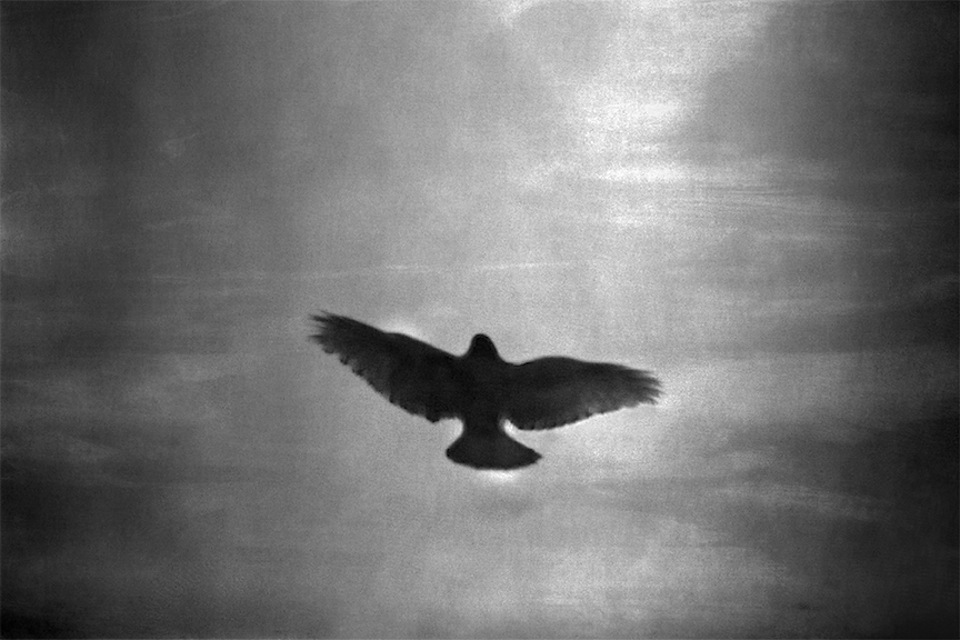
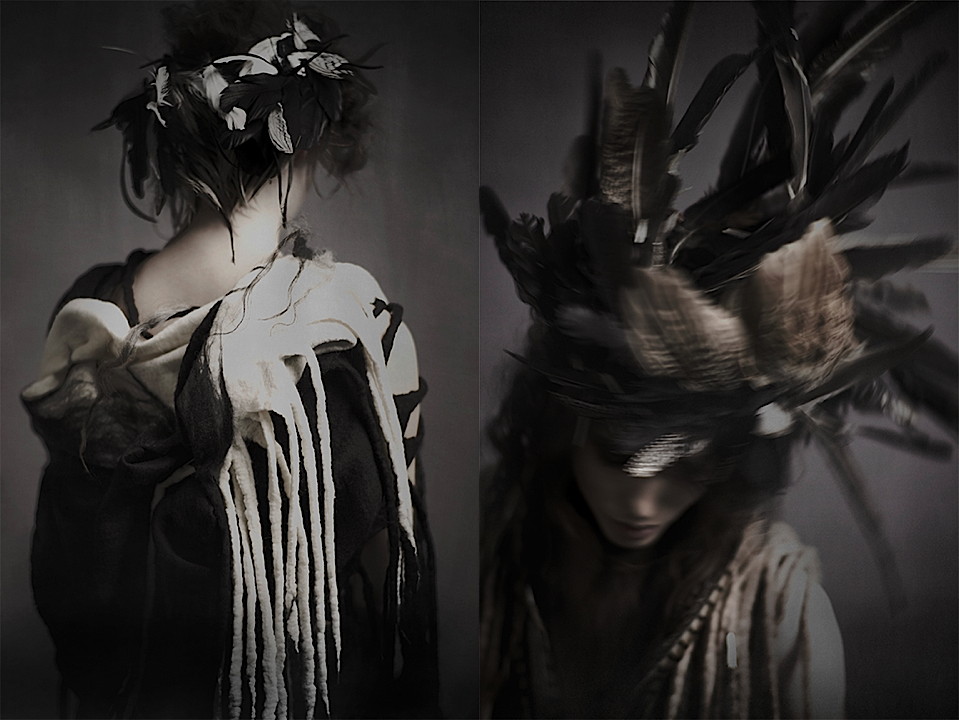
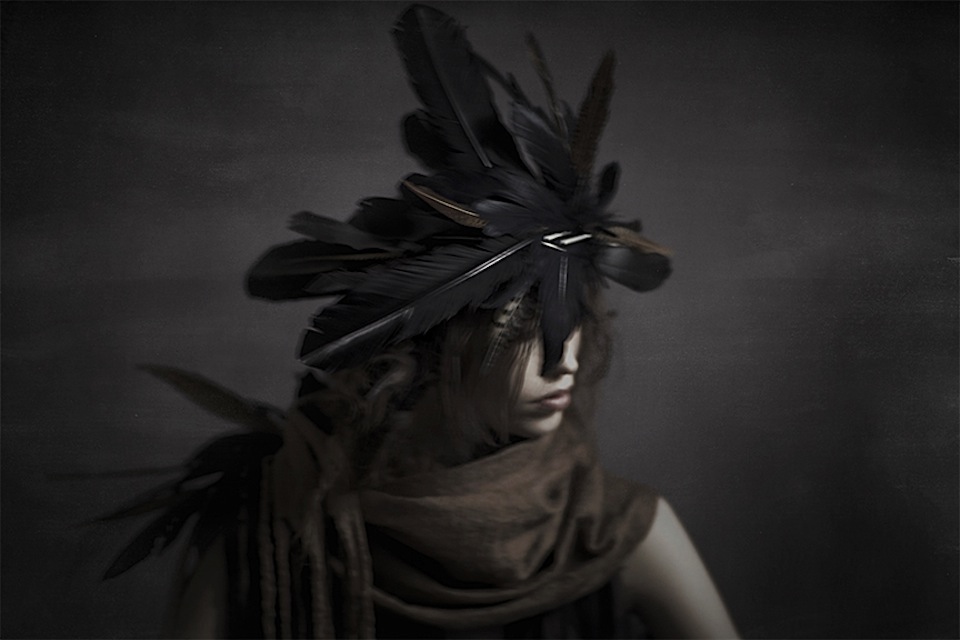
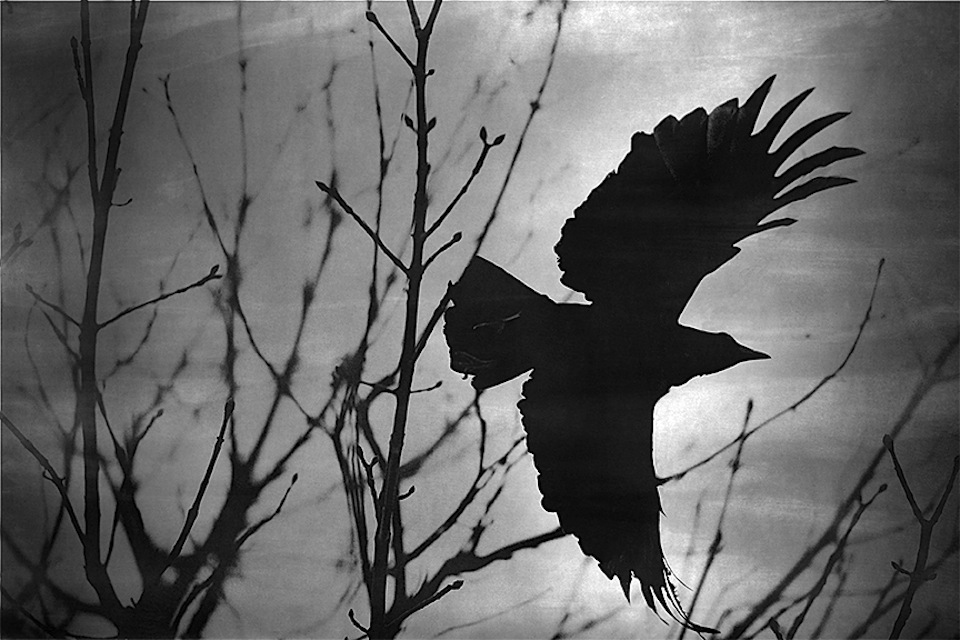
the grace of death

photo by Laura Makabresku
Camilla Bo’ is an Italian freelance journalist and stylist. After two years of study in Paris she returned to her native Rome to study architecture. The art of critique proved more fruitful for Camilla and she began to write for the Association of Art and Critic about art and design and on her personal blog Choufouchouf. Focusing on the relation and communication between fashion and art, she decided to follow her creative nature not only giving a voice to the library she has on her laptop but also as inspiration for editorials. She’s now based in London, attending the course of «Art Direction for Fashion» at the Central Saint Martins College of Art.
Laura is a young krakowian photographer fascinated by poems and novels since her childhood, she spent her life looking for a tool to express.
Then someone gave her a camera and she started to shoot.
The camera as a tool in her hands began to write stories.
And so It happens that she translates images to prose.
Often she is the model of her story to avoid to lye and she often tells stories in her photos which really happened to her. I can imagine her somewhere closer to the woods, mountains and lakes, closer to places where fairy tales were born, because, as she says, those are the places that enhance her imagination more intense.
Her inspiration comes from her childhood when she used to play in a huntsman house which was under care of her grandfather who had many stuffed animals.
“My grandfather let me play amongst them all the time. I was strongly united with these animals. Today, these animals are here, with me. There are more and more of them. Death is closer in the countryside. It seems that it is more “normal” and tamed there. Grandparents don’t hesitate to murder a rabbit in front of child eyes and then skin him. Often my grandparent gave me a long stick and told me to kill a rabbit – I needed to punch him in a head, from behind, near his ears. After that, before they started to prepare it, I could play with it in the garden.”
Animals are closely related to fairy tales and mythology (especially pagan). She likes wearing animal masks on her head in order to absorb their features and to be surrounded by them because in such world she feels safe. She feels very related with nature.
It’s easy to recognize some lines of Kundera or Nabokov in her pictures…
Indeed literature is the other influential part from which she usually takes inspiration for her works. Or better the sensitiveness, darkness and death she found in the poems. “Pain is inscribed in all of these. Everything is linked with each other inseparably”. This is why some of her photos can be poetic and cruel at the same time.
Her most significant exhibition was this year in Krakow at Krakow Photomonth, ShowOff Section.
Now she is working on a big book which includes fairy tales as the ones we used to read when we were kids. She would also like to link photos with the fairy tales that she wrote. I like the idea of a book for children and adults made by pictures instead of illustrations, with short stories to tell before sleeping.
She is afraid of traveling but she would like to see the sea, which she has never seen with her own eyes.
At the moment we can only imagine the emotions that this late meeting will arise and waiting to be struck by the grace of her interpretation.

photo by Laura Makabresku

photo by Laura Makabresku

photo by Laura Makabresku

photo by Laura Makabresku
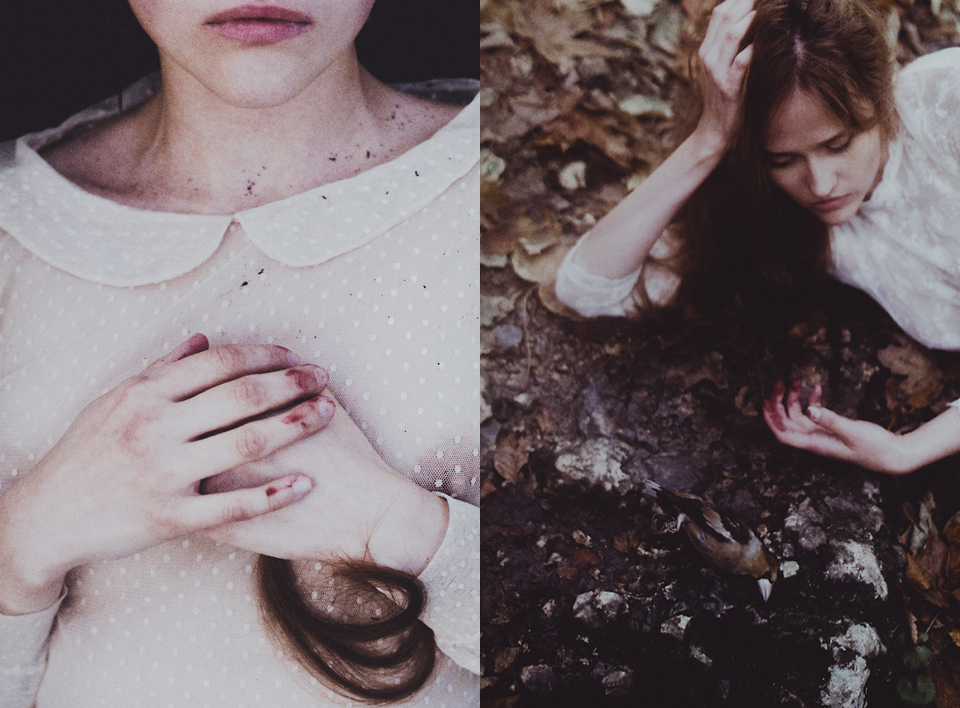
photos by Laura Makabresku
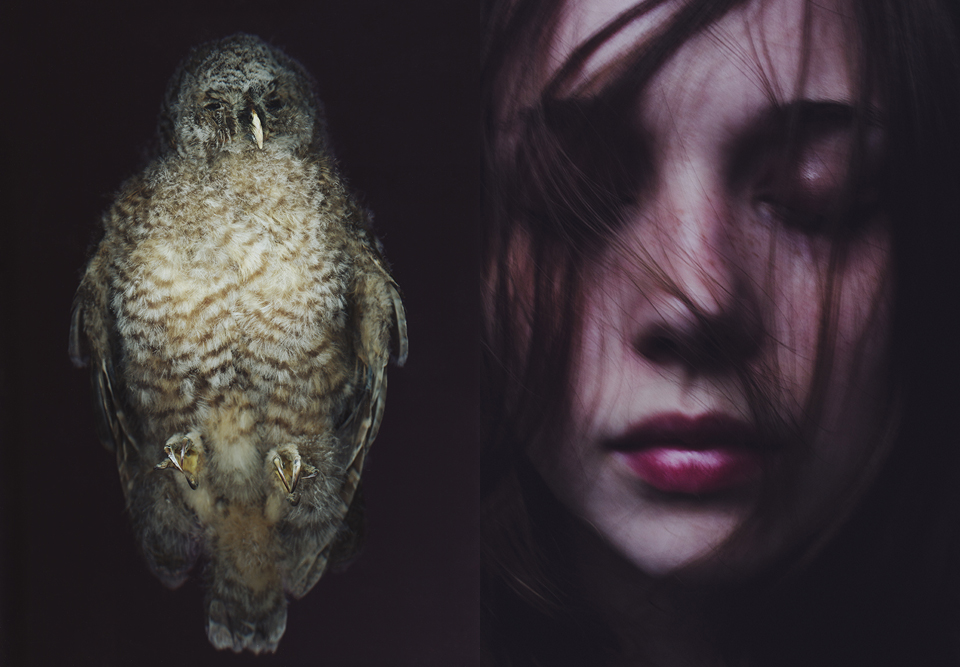
photos by Laura Makabresku
owl the ultimate trend bird
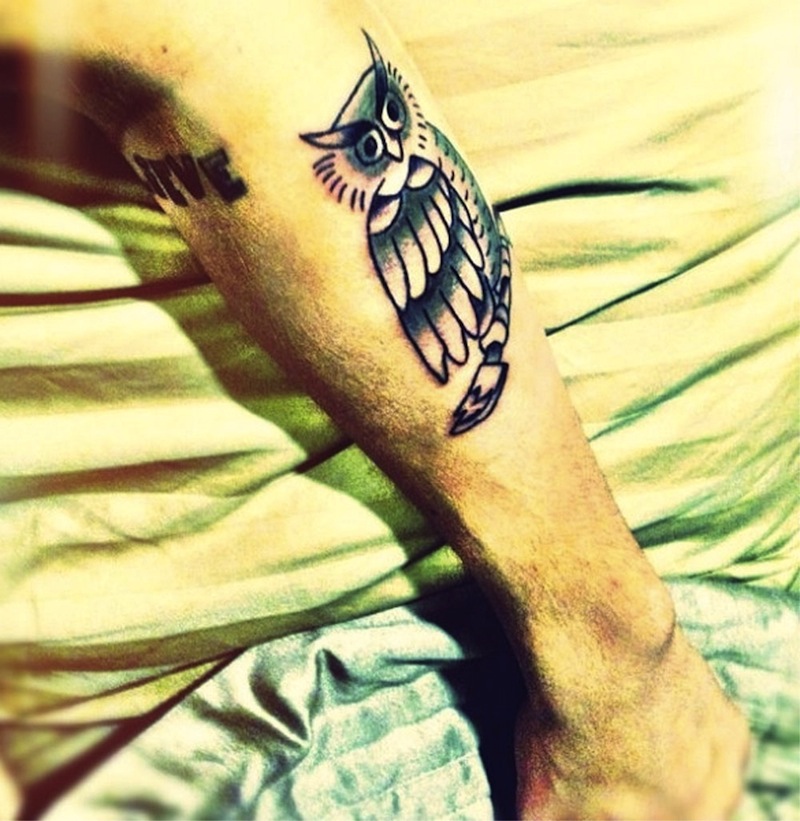
Justin Bieber, the golden child of internet buzz, recently revealed his newest tattoo on Instagram - a grey and black owl on his left forearm. The singer's newest ink confirms Li Edelkoort's Autumn/Winter 2011 forecast, in which she spotted birds as a major trend with the owl as the ultimate trend bird.
With its entrance on the popular culture scene we are likely to see birds, and the owl in particular, continuing to grow as a long-term trend. Hoot hoot!
salon du livre
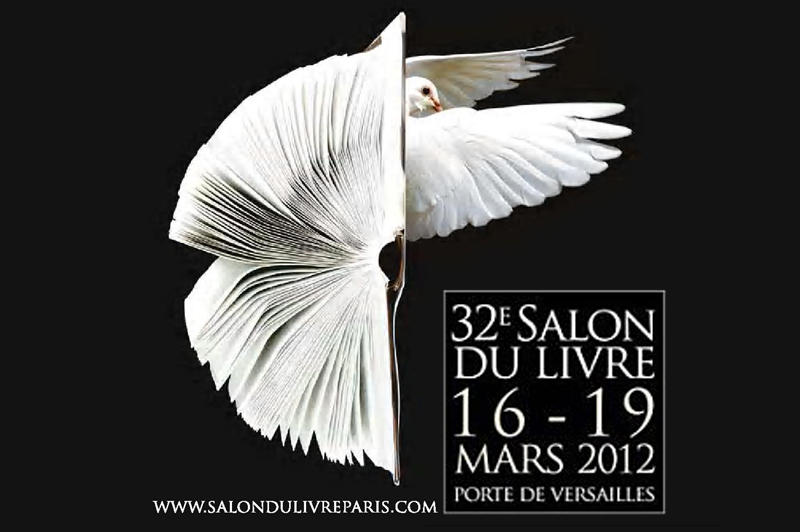
The poster of the new "Salon du Livre" in Paris feature a beautiful white dove. We enjoy it!
fashion takes flight
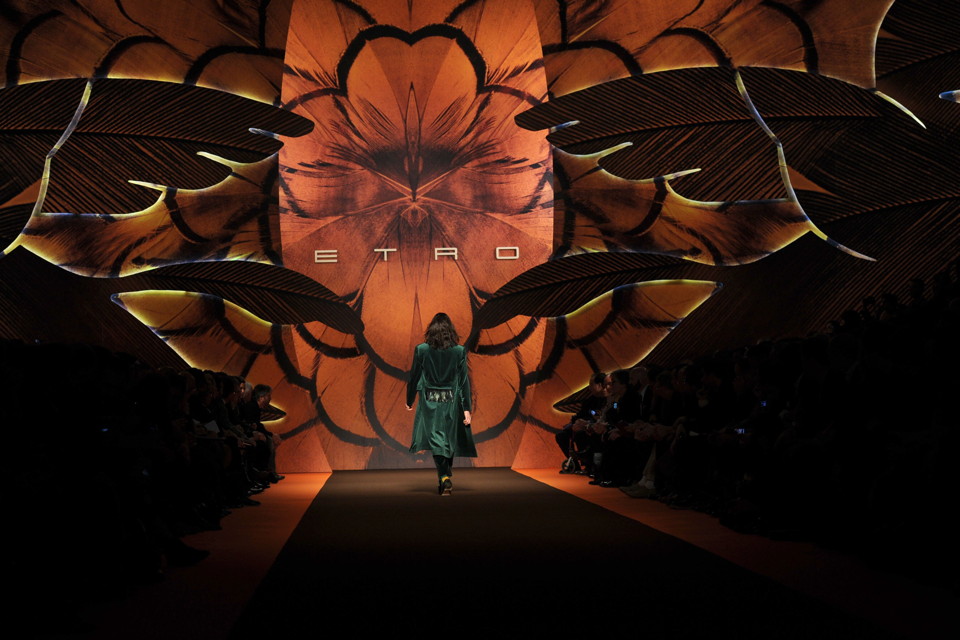
Etro Winter 2012 Milan - AFP- photo by Olivier Morin
New flight patterns for the fashion’s future are underway. During Milan’s 2012 Fall Fashion Week, designer Kean Etro’s collection featured for the show a giant Icarus as a backdrop, feathers took front stage. Etro’s designs adopted a demure palette of marmalade, ash grey, powder blue, burgundy, navy and inky black; feathers replaced buttons on the back of tail coats and adorned the tops of shoes.
As the waxen rigors of formal dress soften, we inevitably discover the beauty of new perspectives and unconventional artistry.
Text by Beth Lauck.
wild upcycling
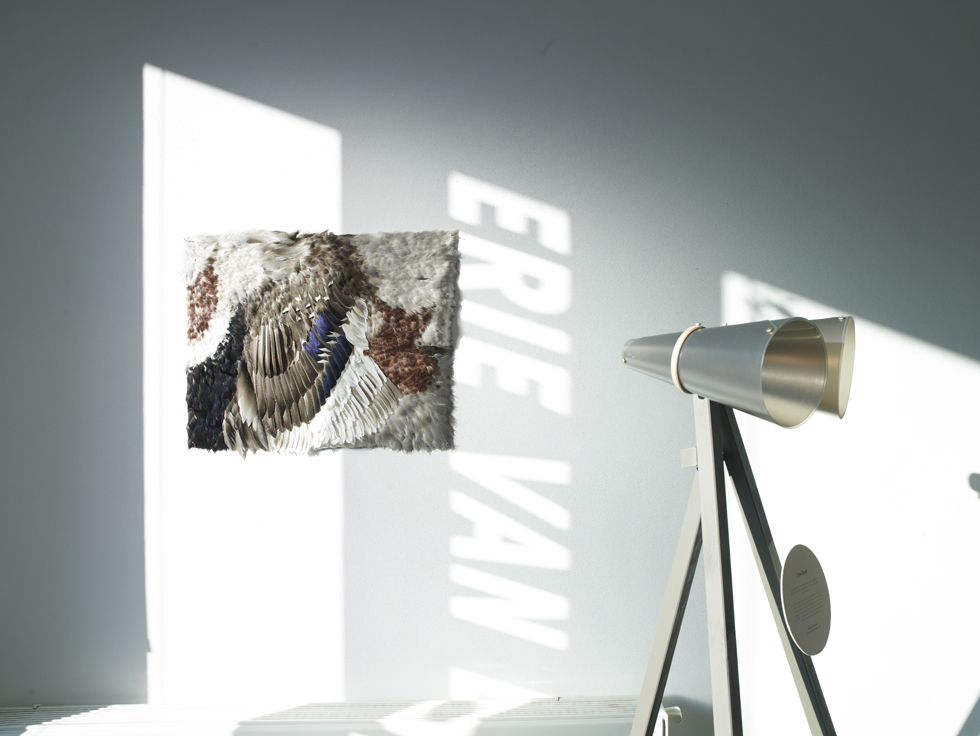
design by monique habraken photo by rued peijnenburg
Monique Habraken is an artist of the undead. Her work begins with the carcass of a duck, killed by hunters in charge of population control. She retrieves the duck’s plumage and fashions a feathered tapestry of intense color and form.
Habraken writes: “In this way, I'm trying to keep the feeling of untouchable wildness alive."
Creating new life from the ashes of dissolution; Habrken’s artwork is a poignant reminder that beauty can never be lost, only reborn. Text by Beth Lauck.
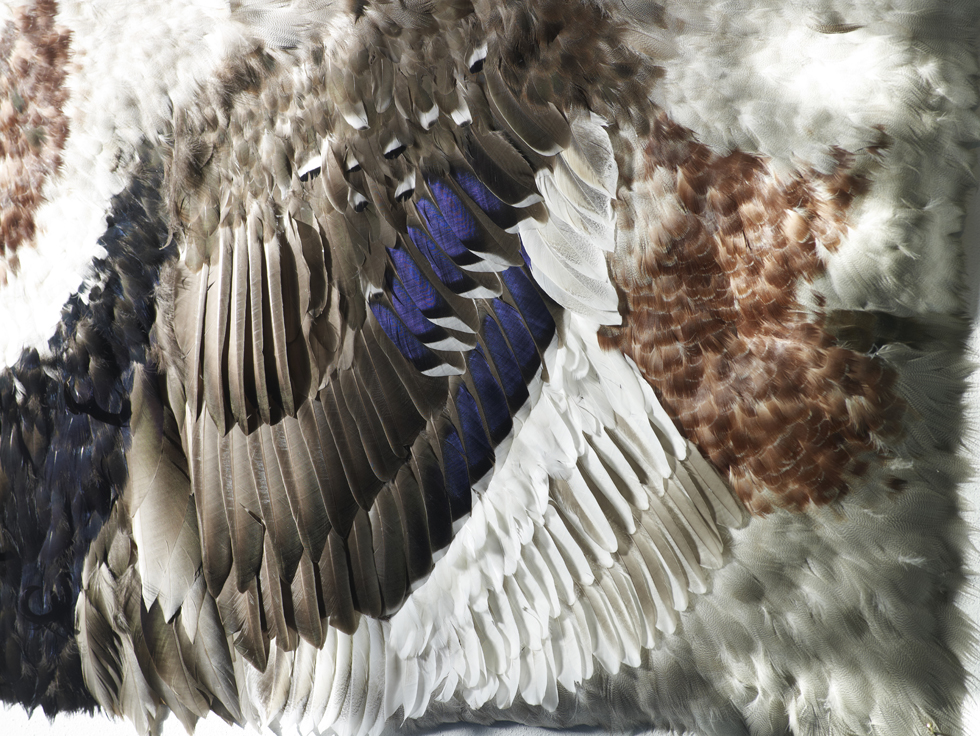
design by monique habraken photo by rued peijnenburg
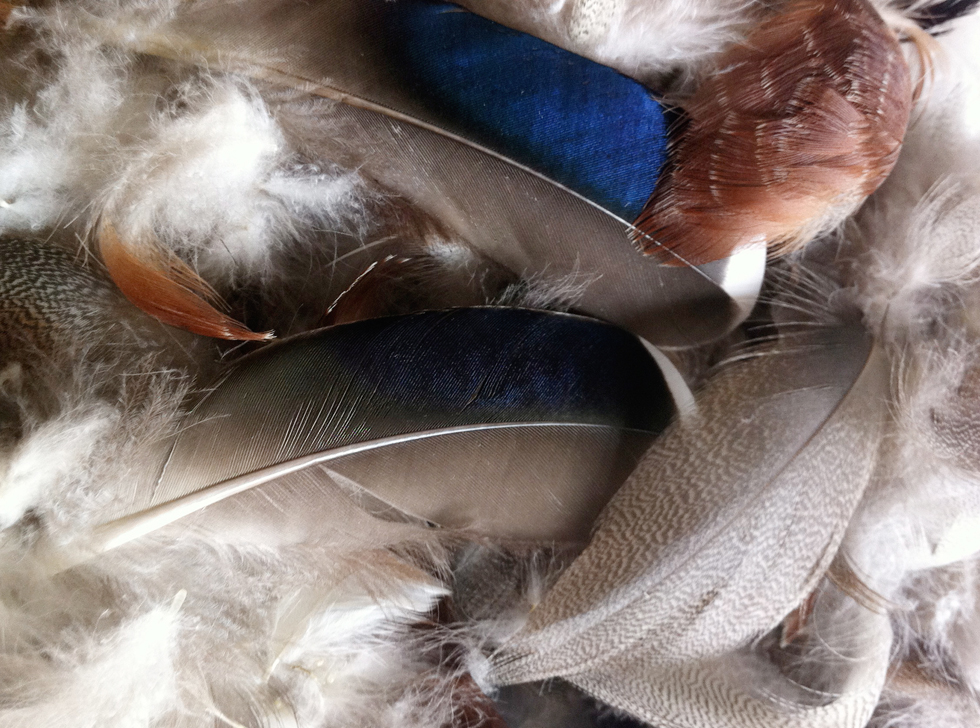
design by monique habraken photo by rued peijnenburg
Abigail +Abigail

design by abigail brown
At the last London Design Festival, we found new "birds". We are happy to introduce you to the works of two talented young ladies.They are both fascinated by owls...And, by chance they both have the same name ! Is Abigail a first name related to birds?
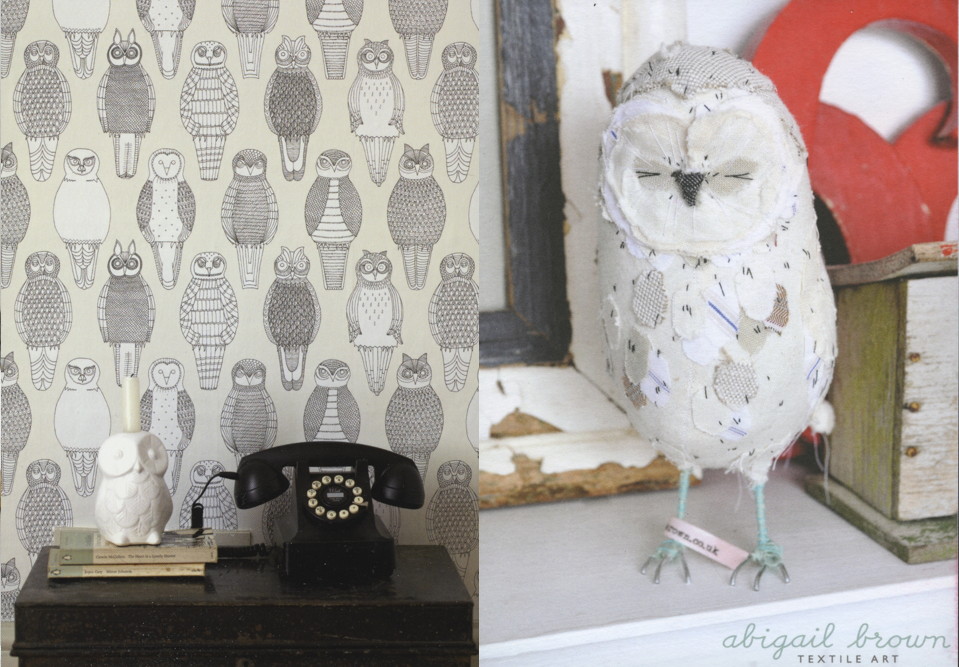 design by abigail brown
design by abigail brown design by abigail edwards
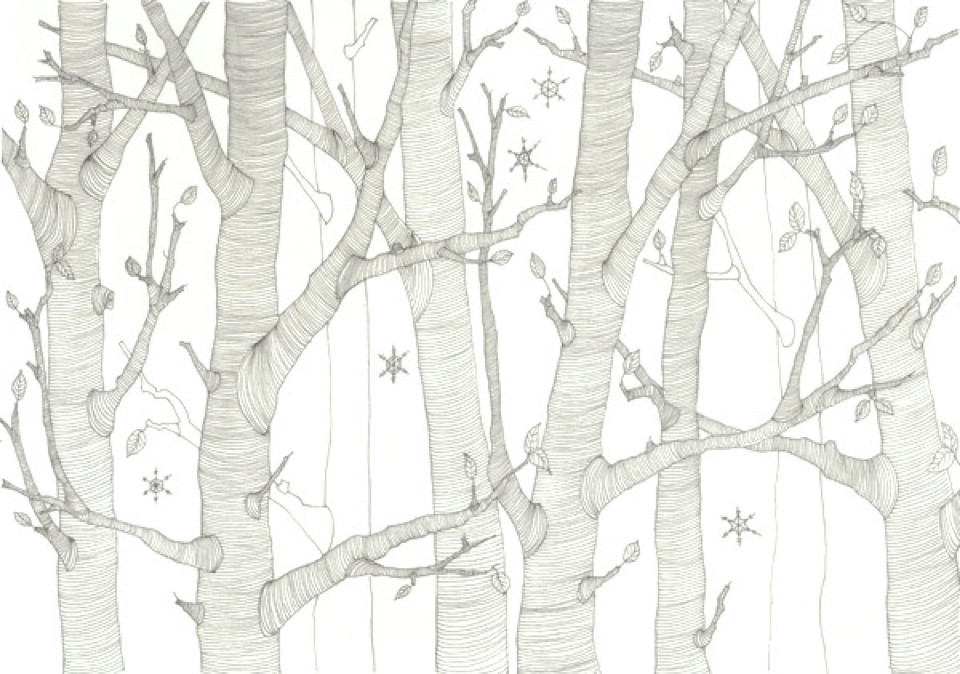
design by abigail edwards
Kokorico...
Nearly two years ago for this season winter 2011, in Bloom n°19 we did a whole subject on the parralel between humans and beautiful chickens. We are happy to welcome Kokorico on Trendtablet as a stylish confirmation. Enjoy!
Jean-Paul Gaultier introduced recently in Paris, Kokorico, his new masculine eau de toilette, to the press in a former theatre that is now dedicated to digital culture. The "Gaité Lyrique" was entirely redecorated in black, red and feathers, the three dominant colors for the new jus.
Kokorico is Jean Paul Gaultier's olfactory cry to men, with notes of fig leaves, patchouli, cocoa, vetiver and cedar. He calls them to triumphantly, intensely proclaim their virility. An aphrodisiac fragrance, a concentration of sensuality and flamboyant panache, that will definitely make feathers fly!
kristine fornes
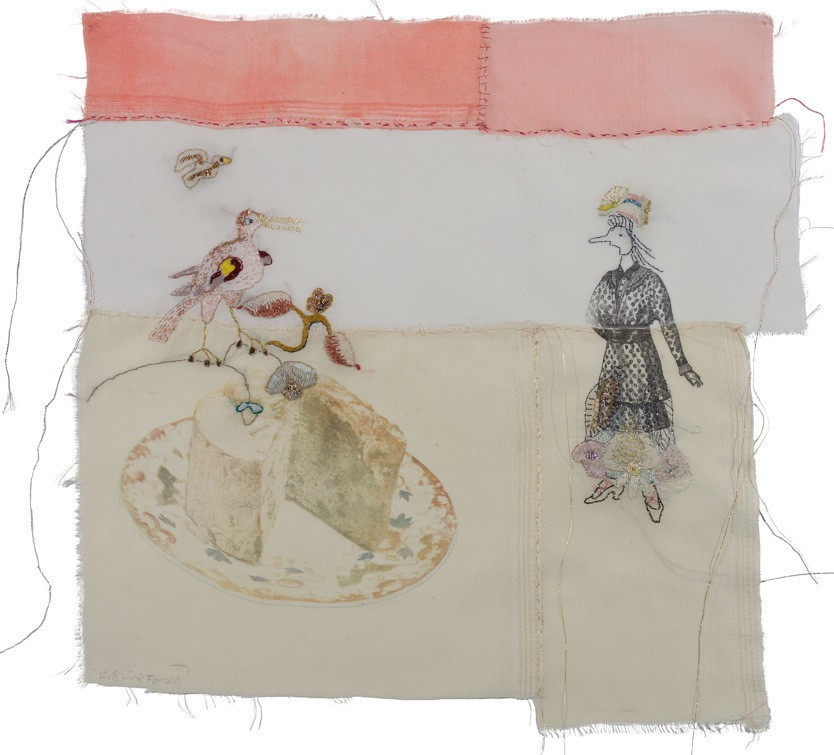
Kristine Fornes is a classic treasure collector; she finds old textiles and reuses them as artistic material. She uses old and torn rags and darned textiles, inherited and found at flea markets. These old tex- tiles are tied to the craft’s carefulness, emotion, and lost slowness.
An old silk fabric becomes a canvas for printed pictures, drawings, and hand embroidery, and its maturity gives her work a patina of drawings. By Line Ulekleiv.
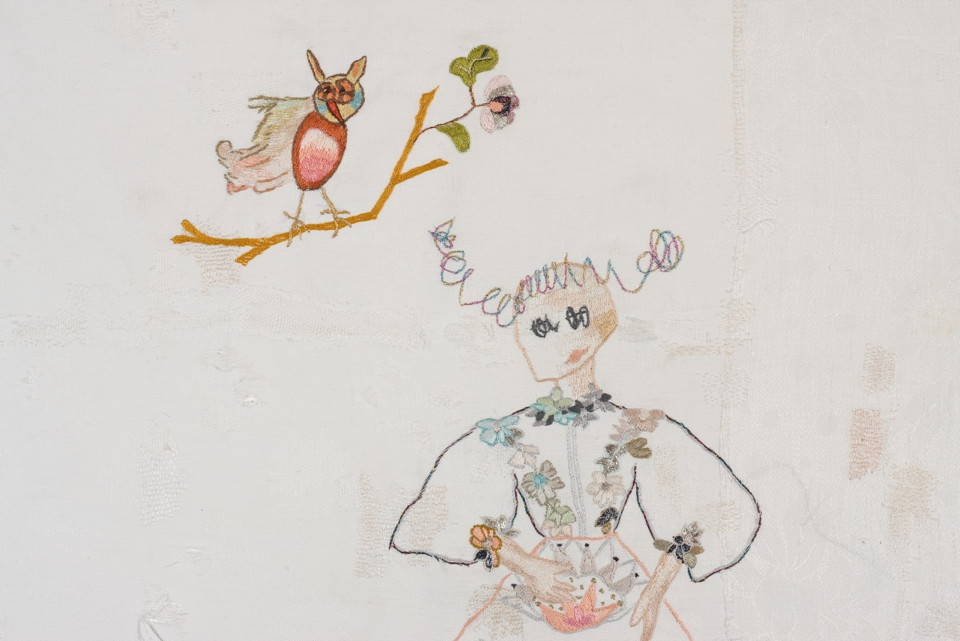
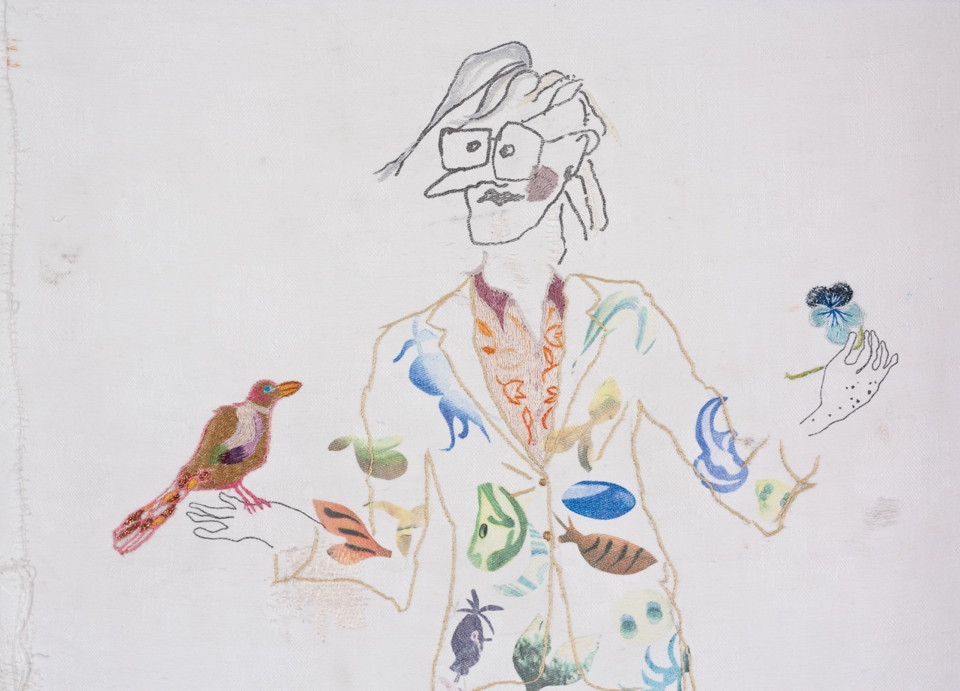
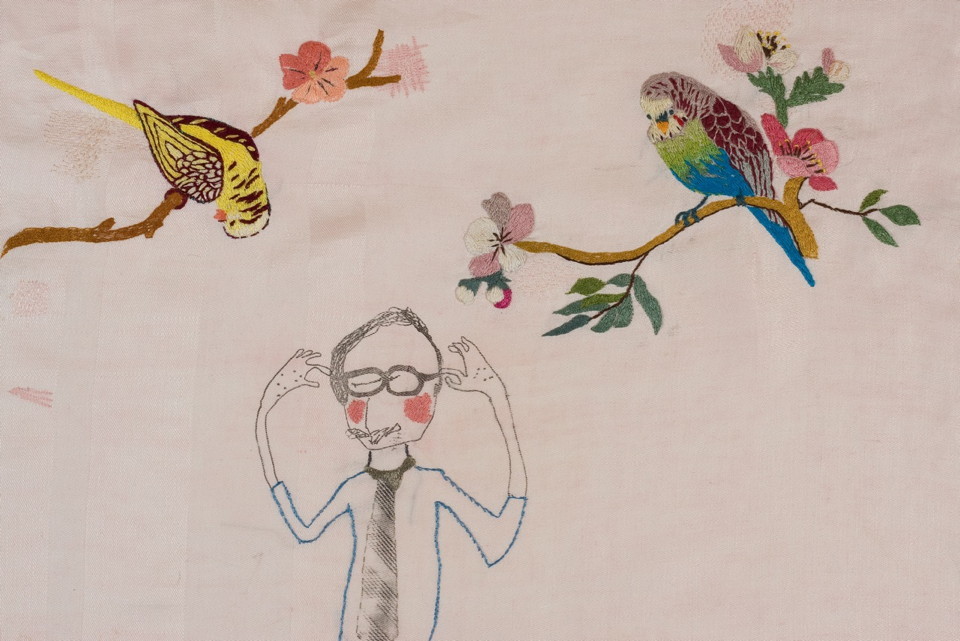
taking flight

photo Alain Jouffray
autumn/winter
2011-2012
now that we have recovered from the worst and are experiencing a new fluidity of movement, the economy and therefore culture will take us to a higher plane for a new and even better perspective. in a positive and optimistic mood, fashion and design will take flight and give us wings on the road to new colours, more texture and exalting creativity.
the world of birds is therefore our source of inspiration, with their interesting behaviour patterns previewing the society of man. living in flocks they inspire us to congregate and share, building nests and inviting us to rekindle the love and care we want to give our family and friends; transgressing borders they install in us a new sense of freedom from convention and control; gathering food they initiate the idea of local produce and seasonal harvest.
the collecting of twigs and debris to weave birds’ nests will inspire us to rekindle a keen interest in artistic and crafted weaving, with designer yarns spun from opposing and complementary matter like mohair with silk ribbons and leather and lurex.
the rituals of courting and mating by the male specimens drive us towards a more erotic experience of the night and a more exotic take on rituals, using colour, dance and sound as essential attributes.
—lidewij edelkoort
30,000 feet above sea level

photo Imke Klee & Antonios Mitsopoulos
blending into the bleak urban environment adolescent boys and girls seek refuge in mimicking matter and neutralised colours, enabling them to be. a survival sense of aesthetics will give this creative community a chance to express more freely and without boundaries.
 photo Heike Odermatt
photo Heike Odermatt photoThomas Straub
the independence and resourcefulness of birds living in and around water inspire awe in us for the way all elements work together; their ecology of interdependence teaching us to consider sustainable style and the use of bio matter, including the use of algae as the fibre of the future.

photo Imke Klee
did man learn weaving from birds or vice versa? the stunning mimicry between humans and ploceidae (weavers) concerning the skill of weaving has never ceased to amaze us, and now comes to the forefront of fashion to herald the revival of artistic and crafted weaving.
 photoThomas Straub
photoThomas Straub photo Stephen Dalton
as the nerd of the birds the owl will never stop to intrigue us.the professor of birds teachesus a lesson in endurance, dedication and perseverance.he is designed to live a nocturnallife, just like an online nerd working through the night, hunting for virtual prey.
 photo Christophe Theurer
photo Christophe Theurer photo:Willem de Lange
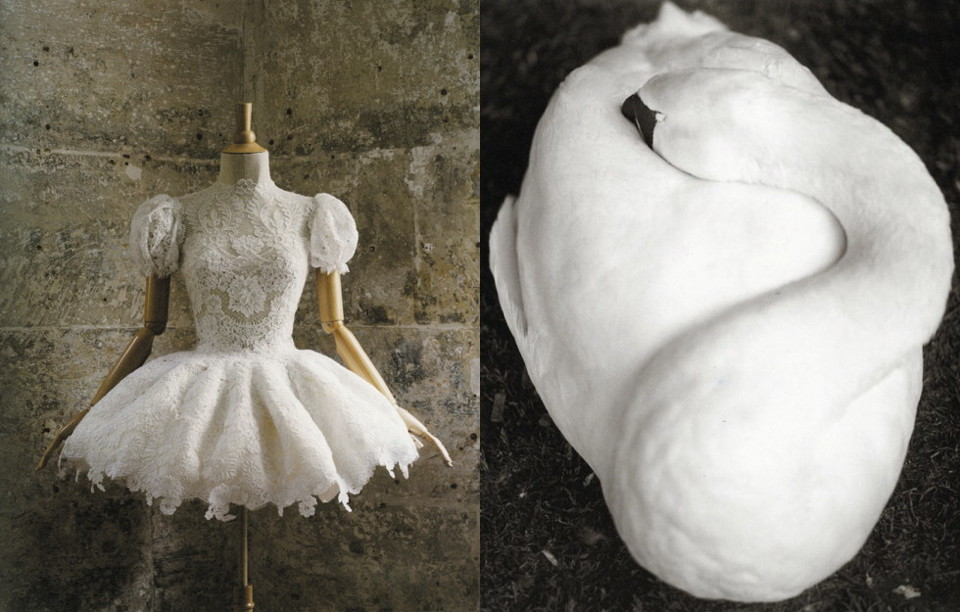
design by frank sorbier photo by patrick gries
colour moves in two distinct directions:
the feathery, heathery, spotted and abstract-patterned neutrals of all kinds to blend into the cityscape, disappear at the beach, hide in the forest or camouflage in the desert, with coloured greys, tinted browns, heathered darks and iridescent blacks or, on the contrary, the gift of colour bursting out on a rounded breast or underlining a curvaceous tail. colour is used as an antidote to morosity, as an incentive to twitter and a formidable tool to seduce. peacock ultra brights will illuminate grand evenings and electric parakeet accents compete with each other in the urban underground,
while parrot pastels will introduce a flapper revival roaring towards the twenties of the twenty-first century.
lingerie and corsetry adorned with furs and feathers will continue to inspire sexual style. the fetishistic and animistic forces in society will be fed with global examples of universal folklore using bone, hide and feathers.
the colour red becomes the dominant accent of the season, inspired by the beaks, breasts, limbs and crests of the ornithological world, introducing flaming turbans, russet scarves, scarlet bows and crimson stockings with ruby patent shoes.
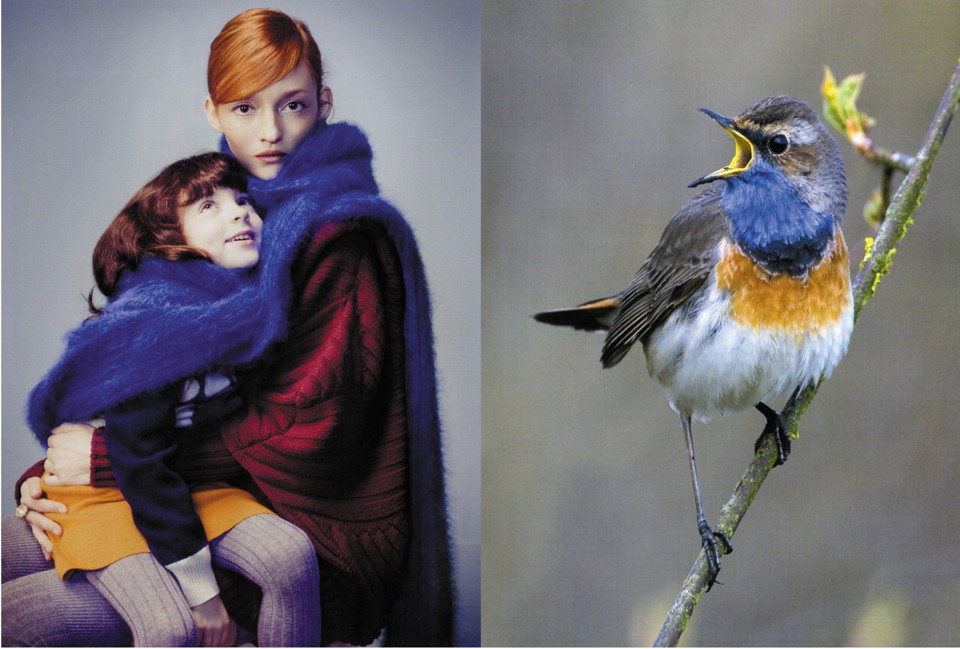 photo by rein hofman
photo by rein hofman
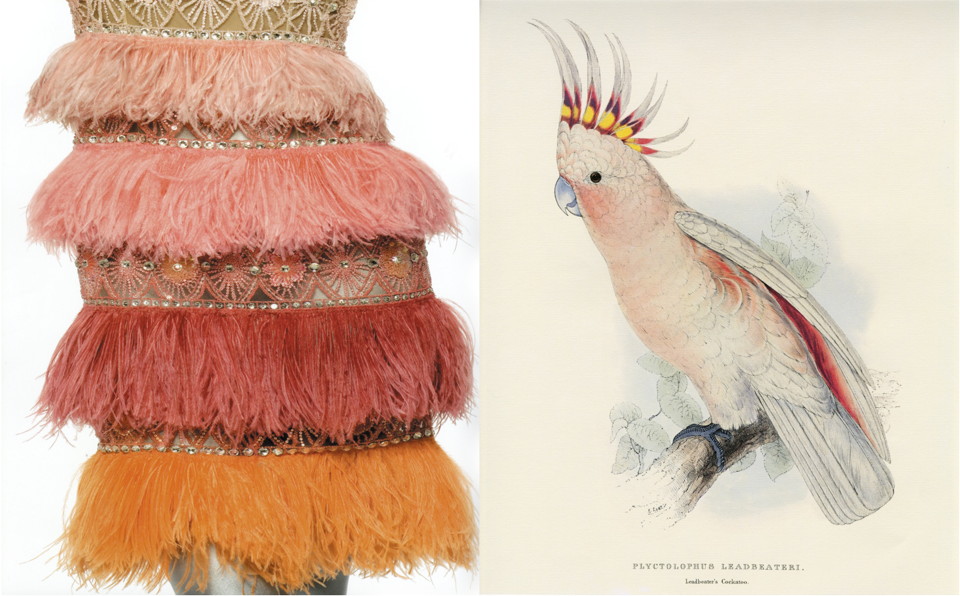
photo by jean tholance
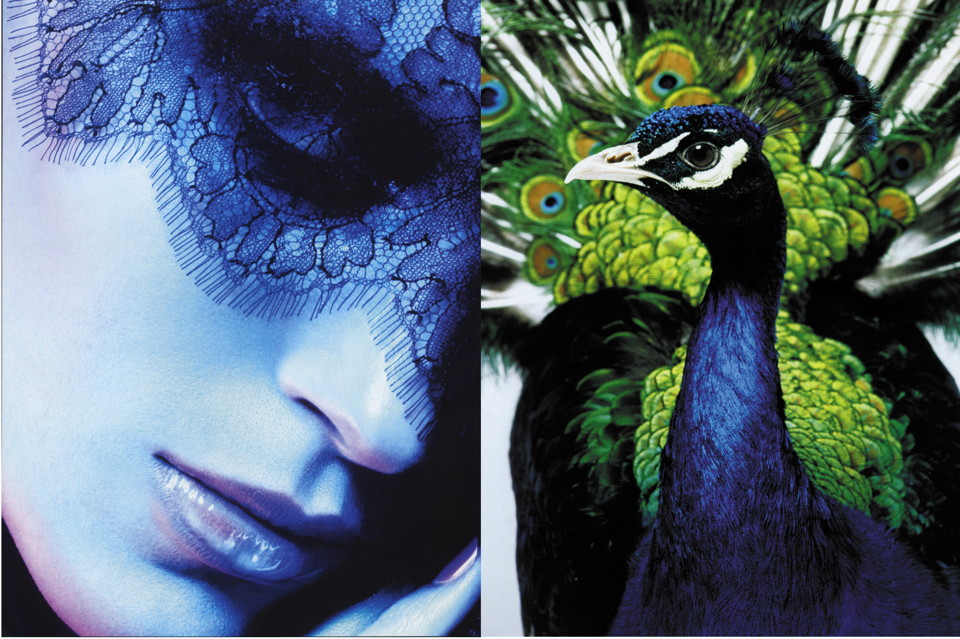
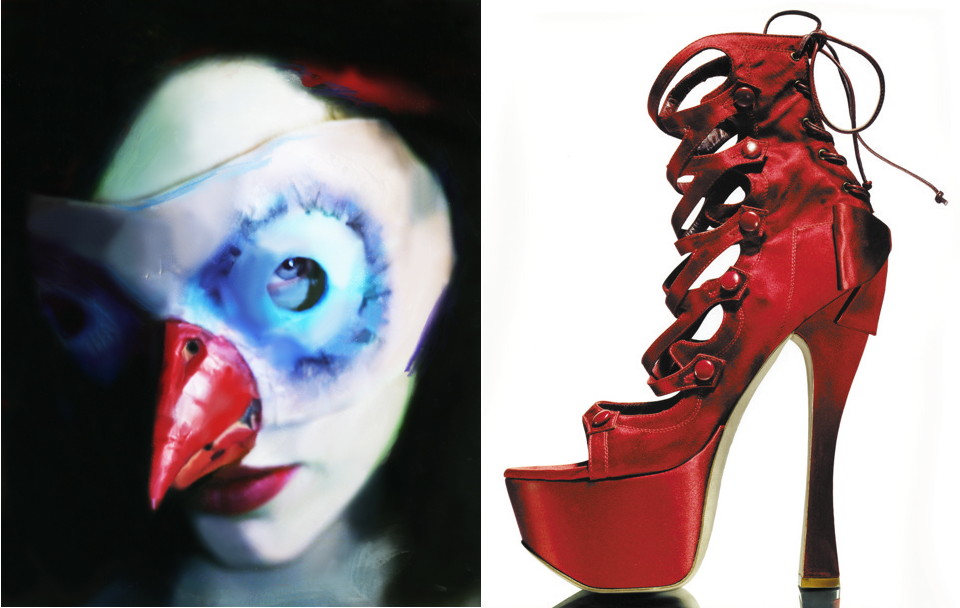 design by dior photo by laziz hamani
design by dior photo by laziz hamani photo by marie taillefer
2011-05-20 20:45:37
2011-04-01 16:20:01
Maarten Kolk & Guus Kusters
"Avifauna’ is about bringing two common worlds we love together, nature and textile.We’ve started to materialize the beauty, shape and language of form that we see in animals and what’s better to start this search than to mold on the animal itself. The ‘Dutch’ Grey Heron, Tawny owl and Blackbird were stuffed without their plumage and used as dummies to design on.
Right now we’re working on designing still animals out of paper. We’re trying to find new shapes, techniques and textures from the motion of flying owls, fighting hares, walking storks and other animals." The Grey Heron, Tawny Owl and Blackbird were first developed for Janice Blackburn’s ‘Small Show Huge Talent’ None of the animals were killed for this project.

photo by Sabine Pigalle

photo by Sabine Pigalle
LIDEWIJ EDELKOORT FOR ALCRO DESIGNERS 2011-2012
The world of birds is therefore an amazing source of inspiration,singing birds inspire luminous spaces that will make us smile, with almost brights that bring some sunshine on a rainy day.
Nesting birds tell tales of arts and crafts colours to be woven into an artistic interior.
Rural chickens chirp about the authentic colours of the Swedish farm,while baby birds cheep from the delight of their softly-coloured neutrals.
Avant-gardist urban birds flock together in sombre and grey interiors, while black birds dabble in the darkest iridescence.
Parrot pastels will introduce a flapper revival, roaring towards the twentiesof the twenty-first century.
All shades can be contrasted with a basic linen, a lacquered black and a matte gold—to make all our colours sing!
—Lidewij Edelkoort
BABY BIRDS

photo:Thomas Straub-styling Nelson Supelveda
A soft and gentle universe of clear and optimistic colour is inspired by thefluffed-up downy character of endearing baby birds.
Just broken out of the egg, these tinycreatures with stumbling awkward movements and wide-open beaks fighting for food are tender and cuddly, expressing the promise of new life and new opportunities after a long period of morosity, economic crisis and general fear of life. The need forcreation is breaking out of the egg of conception.
Confident without being functional, basic without being boring and tender without being tedious, these colours are the basis of our range for 2011.
An endearing start to a new period of nesting.
—Li Edelkoort

illustration: Nathalie Lété
URBAN BIRDS

photo:Thomas Straub-styling Nelson Supelveda
Birds of a feather flock together in inner city clans and neighbourhoods enabling different societal expressions to be recognised by the group.
Living a make-do mentality that will dominate design with sheltering sanctuaries and squatted industrial buildings.
A survival sense of aesthetics will give the creative community a chance to express more freely and without boundaries.
Therefore the end of the age of individualism has arrived, allowing us to network and cooperate.
An army of dark neutrals will revolutionise interiors, becoming abstract and minimal.

illustration: Nathalie Lété
RURAL BIRDS

photo:Thomas Straub-styling Nelson Supelveda
Fashion and design have decided to stay on the farm indefinitely now that even in the virtual world farmville.com is the place to be seen, to seed and to harvest.
More than ever, our focus is on authenticity, honesty and local colour.
Inspired by the revival of a rural culture and the birds that roam the farm, the colours want to be trustworthy and traditional, with a slightly frozen and whitewashed quality to make them lively and vibrant.
Design will be true and proven and furniture will reflect the functional aspect of rural life.

illustration: Nathalie Lété
WEAVER BIRDS

photo:Thomas Straub-styling Nelson Supelveda
Did man learn weaving from birds? Or visa versa?
The amazing skills from birds that weave and construct their habitats with bits and pieces of fibrous finds has been inspiring man from the beginning of time. Nesting has become a contemporary keyword to describe our current and crafted lifestyle; open-ended yet cosy and comfortable. A gentle and hospitable space ready to receive family and friends.
The arts & crafts movement is making an important revival, inspiring objects made by hand in timber, hide, bone, ceramics and glass. Filling the nest with unique pieces.
The creative consumer is born.

illustration: Nathalie Lété
COCKTAIL BIRDS

photo:Thomas Straub-styling Nelson Supelveda
A new and soft range of coquettish cosmetic colours meant to be used for an elegant and sexual purpose, giving a refined and genderspecific meaning to paint.
Caged birds of exotic origins are inspiring a highly-charged and erotic sense of aesthetics, drawing on the idea of the liberal bondage of beauty. Translated to the real world with the concretisation of female fantasises in private spaces like the personal bathroom, the secret walk-in closet and the remarkable revival of the boudoir—the ultimate female sanctuary.
These softly greyish pastels will give an edge of rococo to contemporary decoration and should be used with restraint and wisdom.

illustration: Nathalie Lété
SINGING BIRDS

photo:Thomas Straub-styling Nelson Supelveda
The sudden song of the singing bird can wake up the spirit and produce a smile. It can give light to an otherwise uneventful moment. Giving colour to an ordinary day.
Its humble frame and chubby coat only help make it more endearing and make its magnificent voice even more remarkable. Their little bodies are tinted in drab and neutral tones with a strong accent colour on a rounded breast or hidden under a pointed tail.
These gentle colours are medium brights that are easy to mimic and use, meant to act as sudden unexpected accents in otherwise neutral spaces.
Just enough to give light and life to an interior.

illustration: Nathalie Lété
BLACK BIRDS

photo:Thomas Straub-styling Nelson Supelveda
Highly intelligent and powerful birds have been dark symbols since the beginning of man.
Resourceful and operating with a strict hierarchy in a large flock called a murder, they have become icons of the gothic movement, living often in cemeteries and believed to assist the transition of the spirit to the after life.
Standing for dark and almost dramatic environments, so much loved by the avant-garde, and therefore introducing much darker colours for the home.
these tinted hues of black are used to update anything the consumer wants to change in a radical and provocative way.

illustration: Nathalie Lété
2011-04-13 17:56:57
2011-04-13 13:16:06
2011-04-13 12:28:05
Cathy Miles
"Cathy Miles is an English metal smith who uses a unique concoction of wire, found materials and text to depict common bird life. Her works take the form of three-dimensional drawings documenting the belly tickling moments of the everyday. "I was trapped on the tip of Southend pier with an elderly man called Dave, (an eccentric yet morbid local) when I started to drift in to the eccentric world which my current work revolves in.
As Dave went into his personal problems in grave detail, (death of budgie, stomach ailments etc.), in desperation I began to stare at the little ringed plovers and imagine their conversations and complaints. I came to the conclusion that they were just like us with their grumbles and gripes, bad habits, love interests and attention seeking behavior…"
Cathy Miles
Lena Savchenko
Lena Savchenko is a young Russian-Ukrainian designer of 23 .
Her brand «IVLISA» is an handmade and semi-bespoke footwear.
All materials are natural from best genuine leather, natural wood and exotic feathers. Here is what she says of her collection:
"I was working on her final university project and then I saw a bird
in London and I thought about the construction of its beak and how will it look as a heel. After I’ve done a huge research on feathers and beaks, colors and wings and after 4 months of researching, drawing and insomnia I came up with my collection."



Super stars
